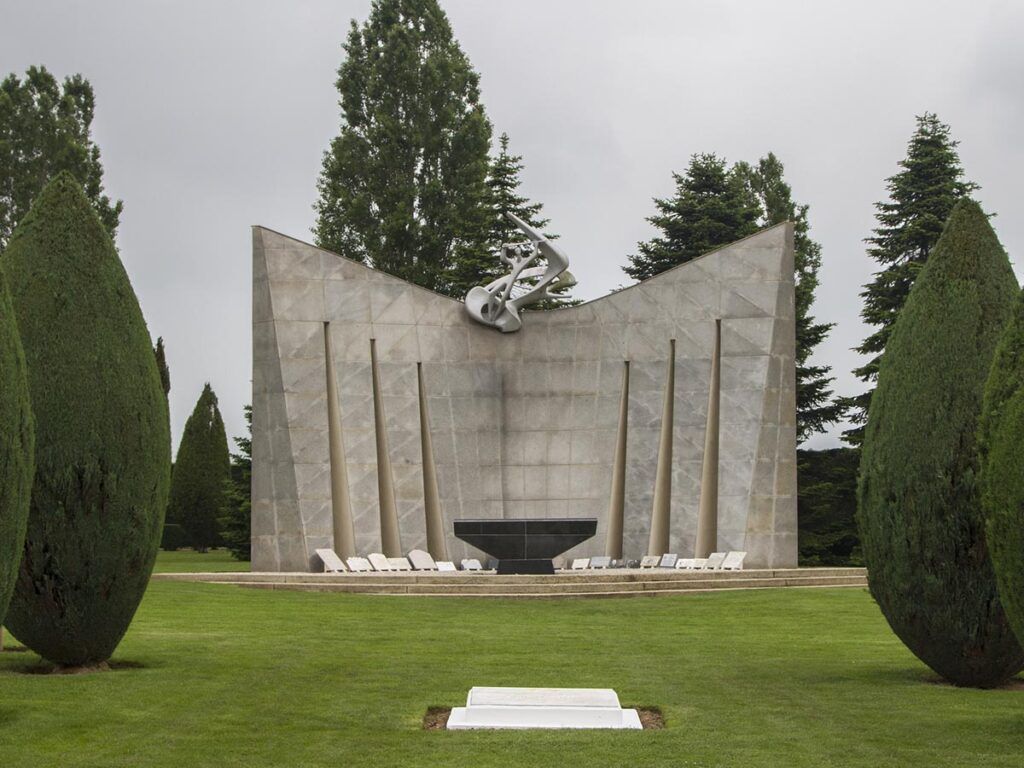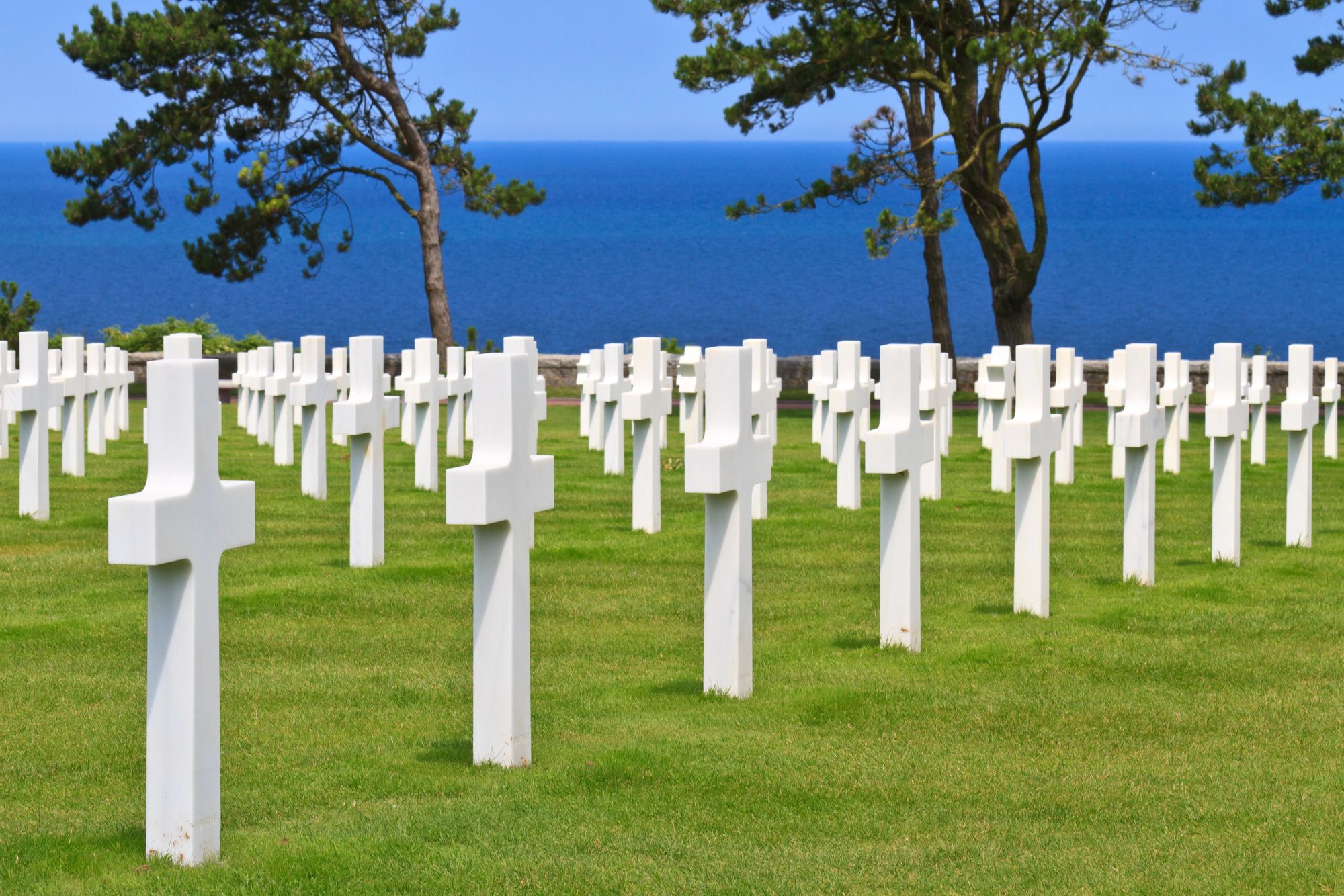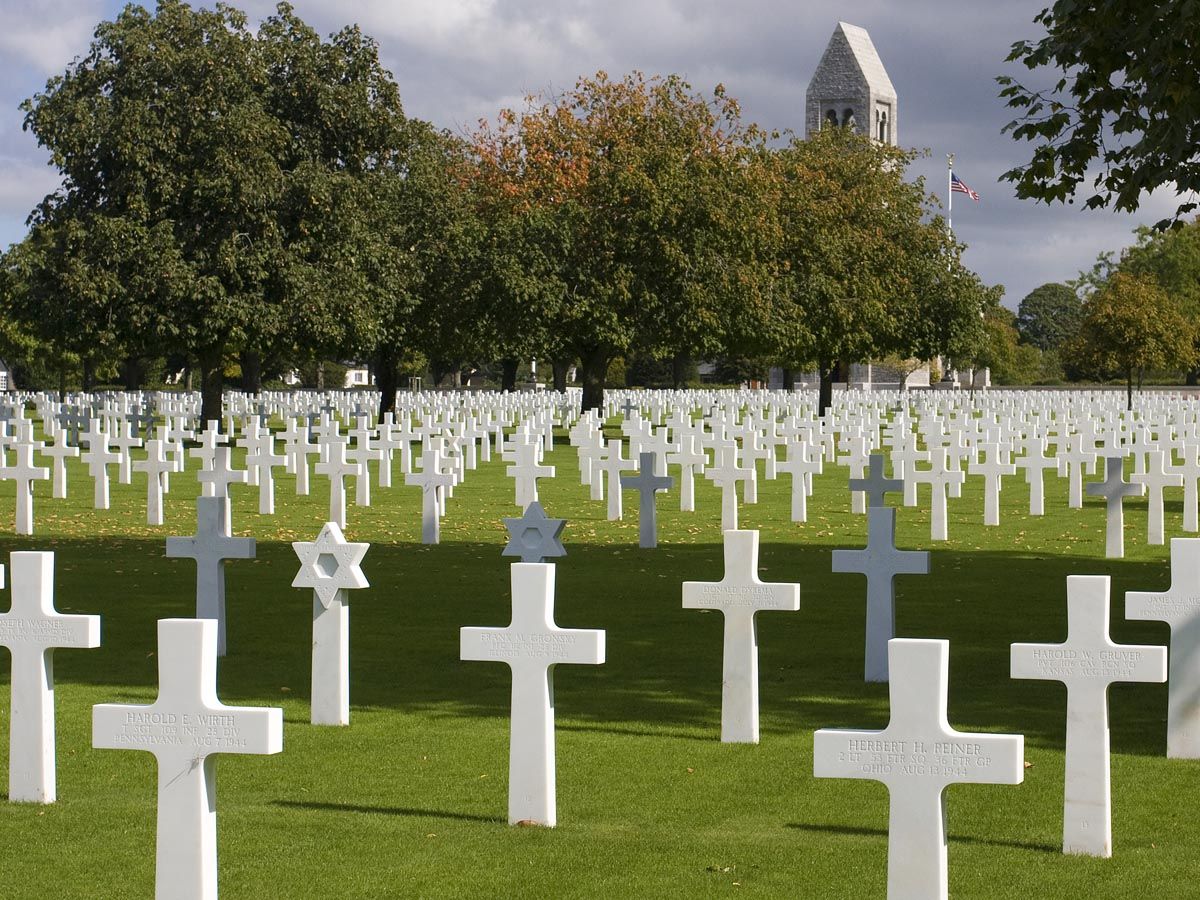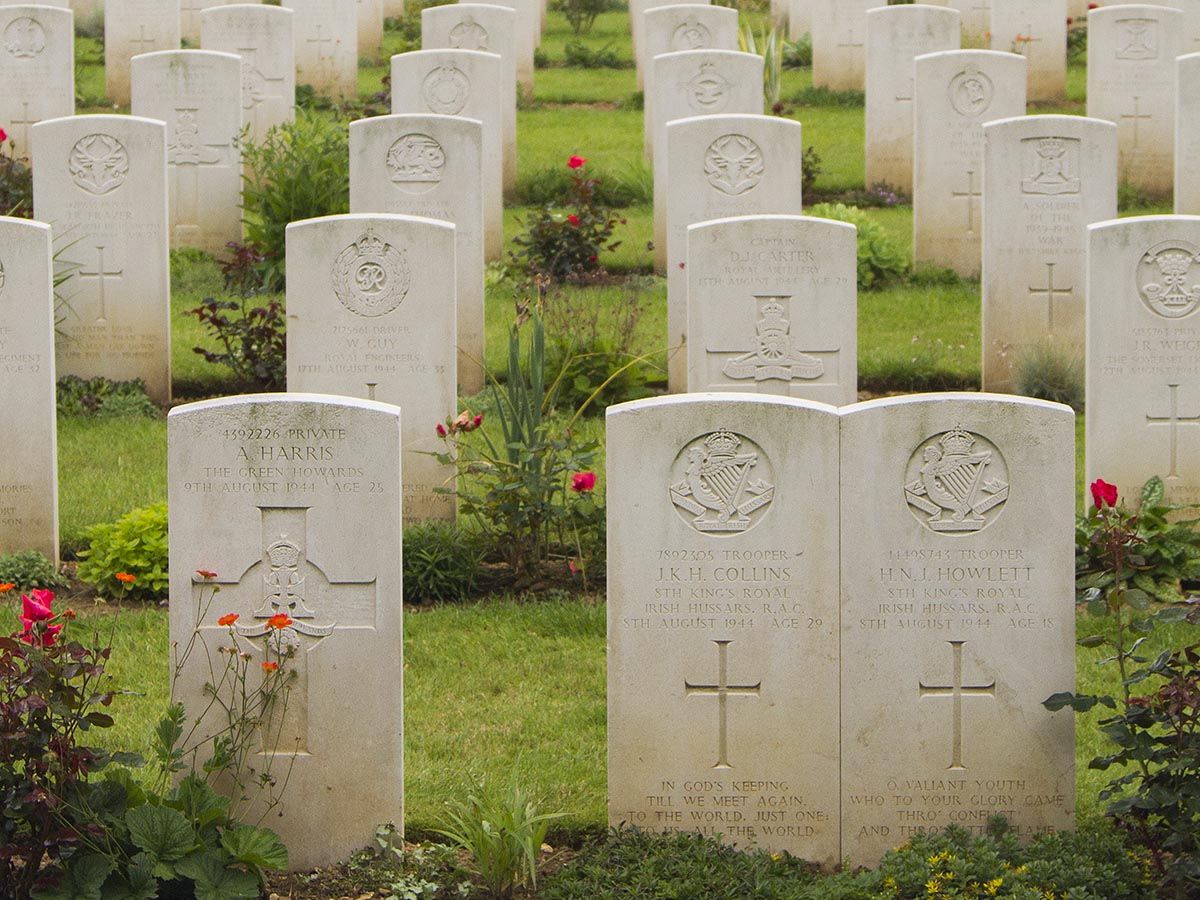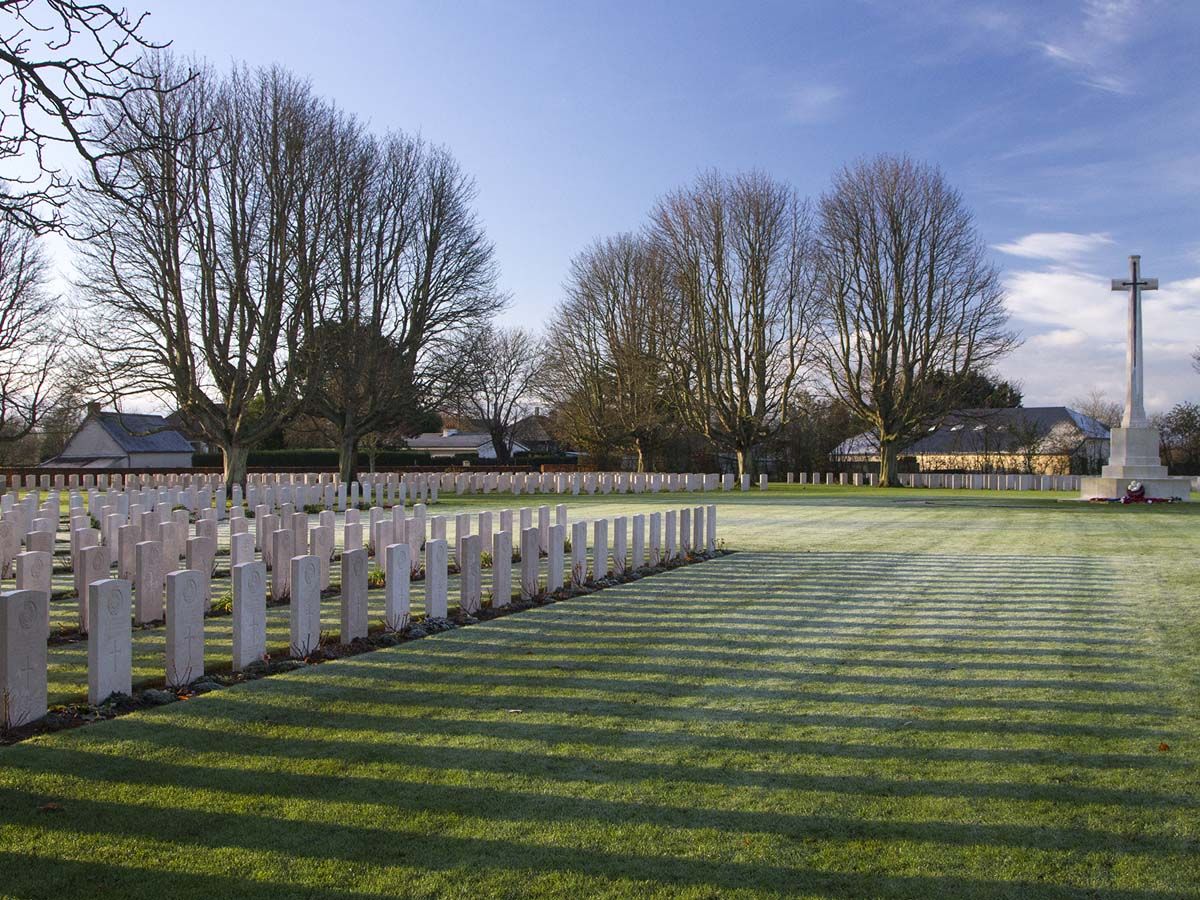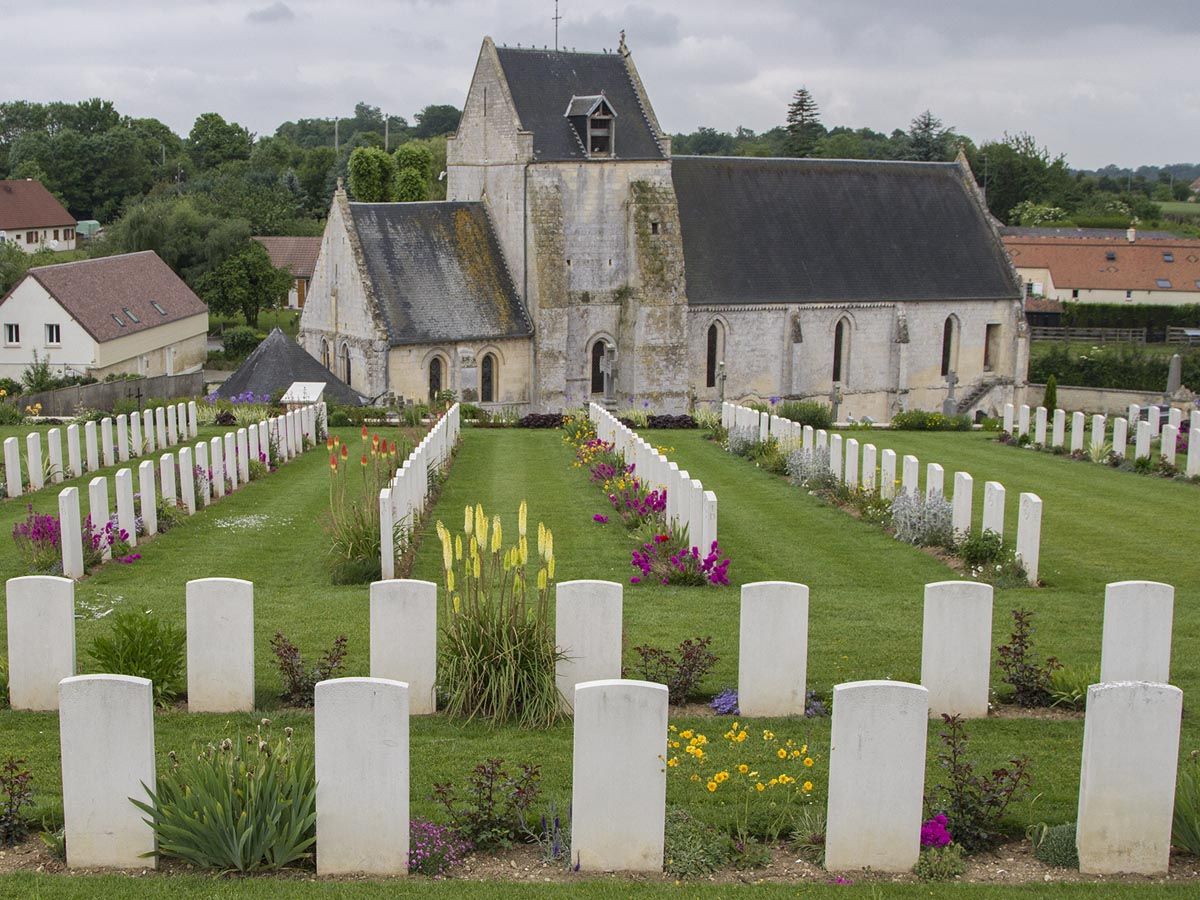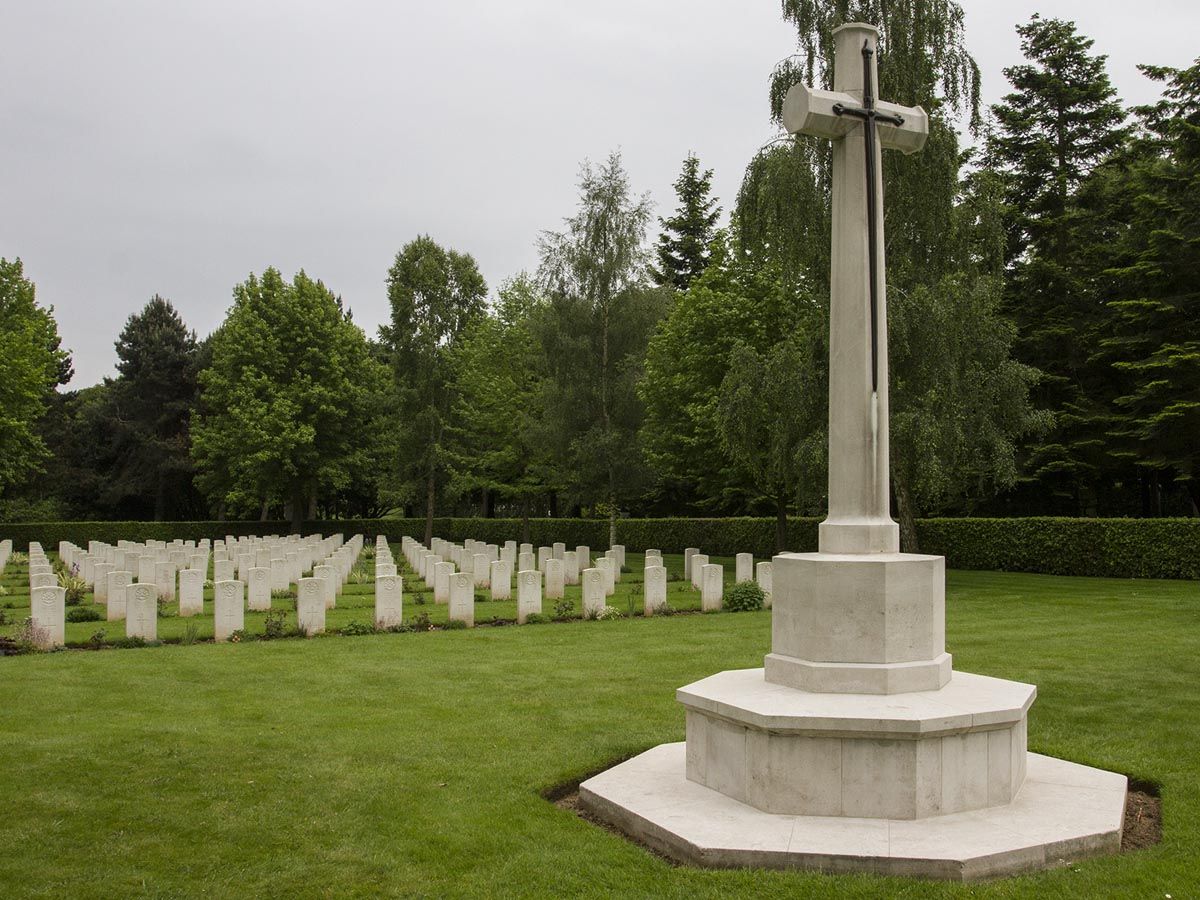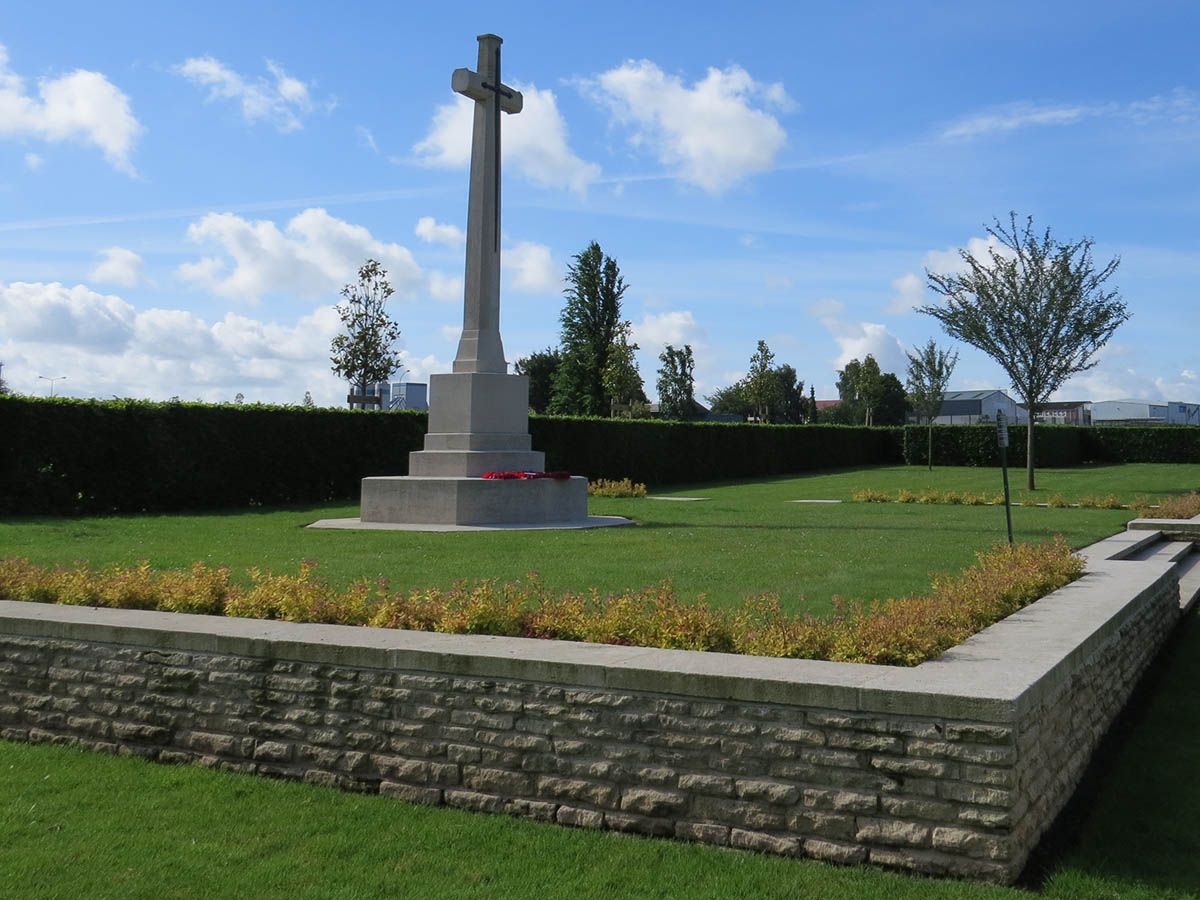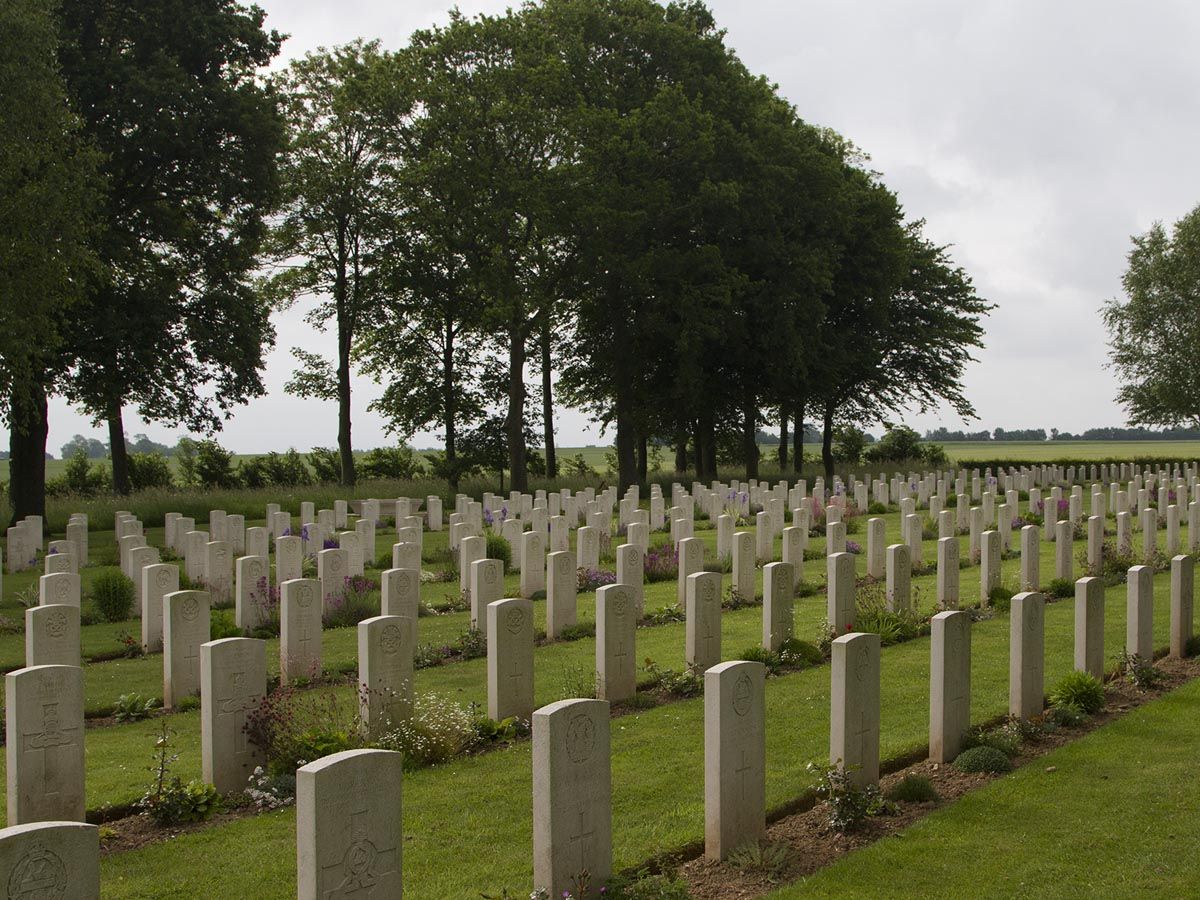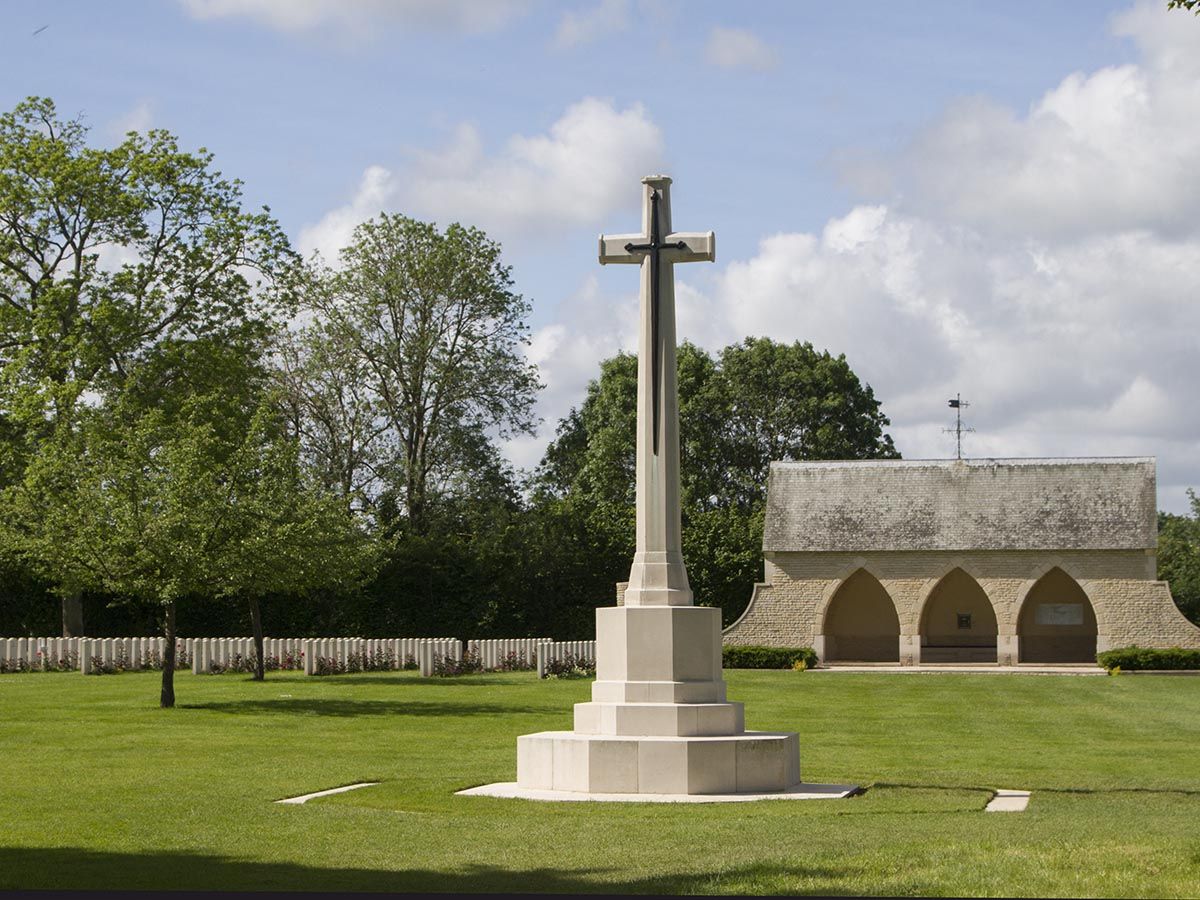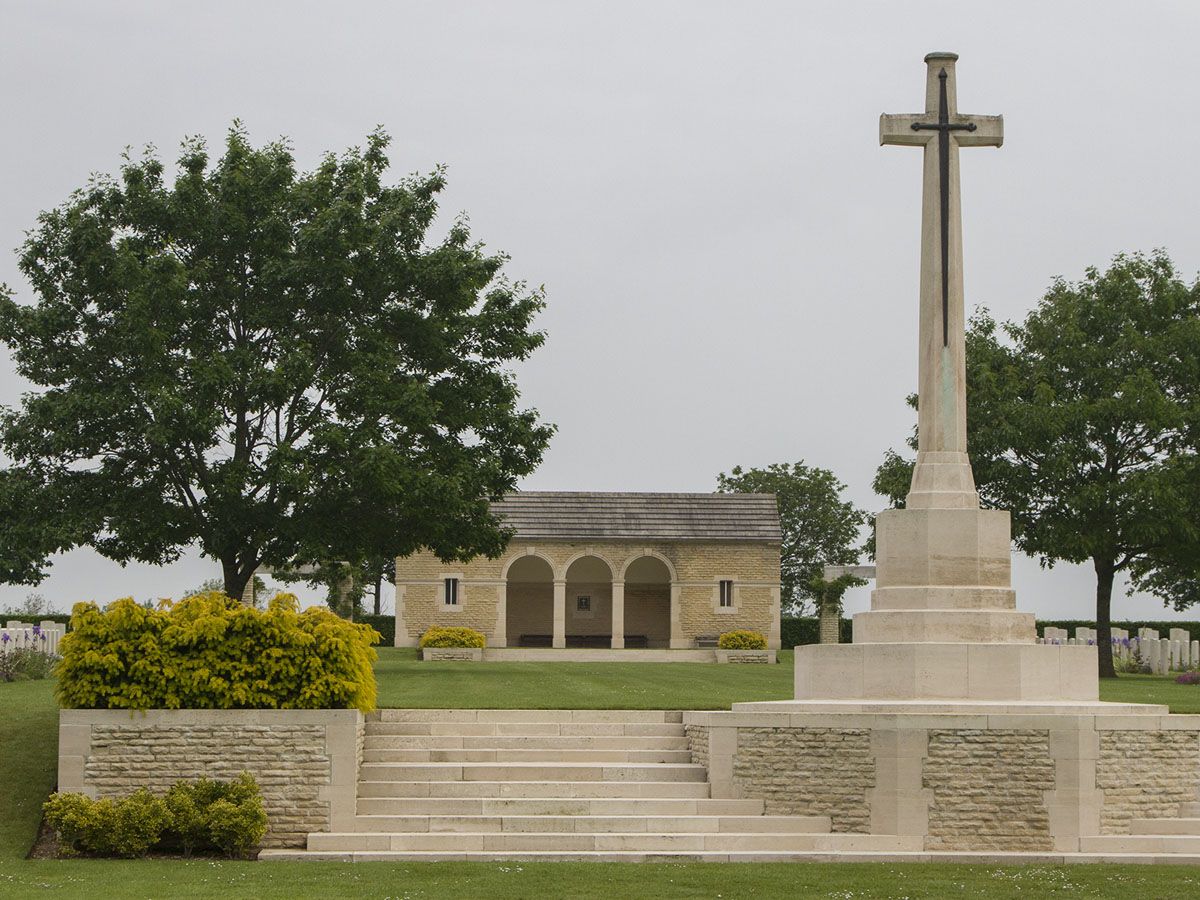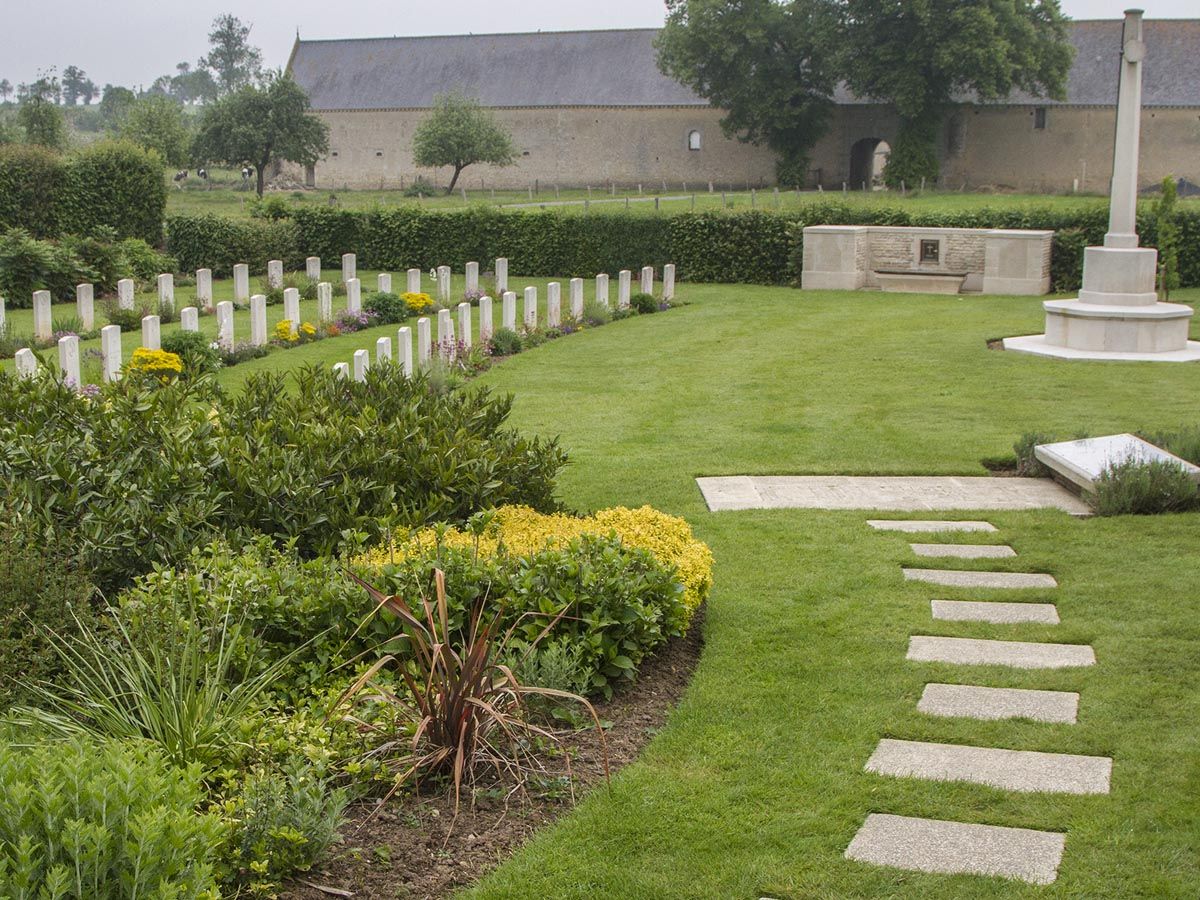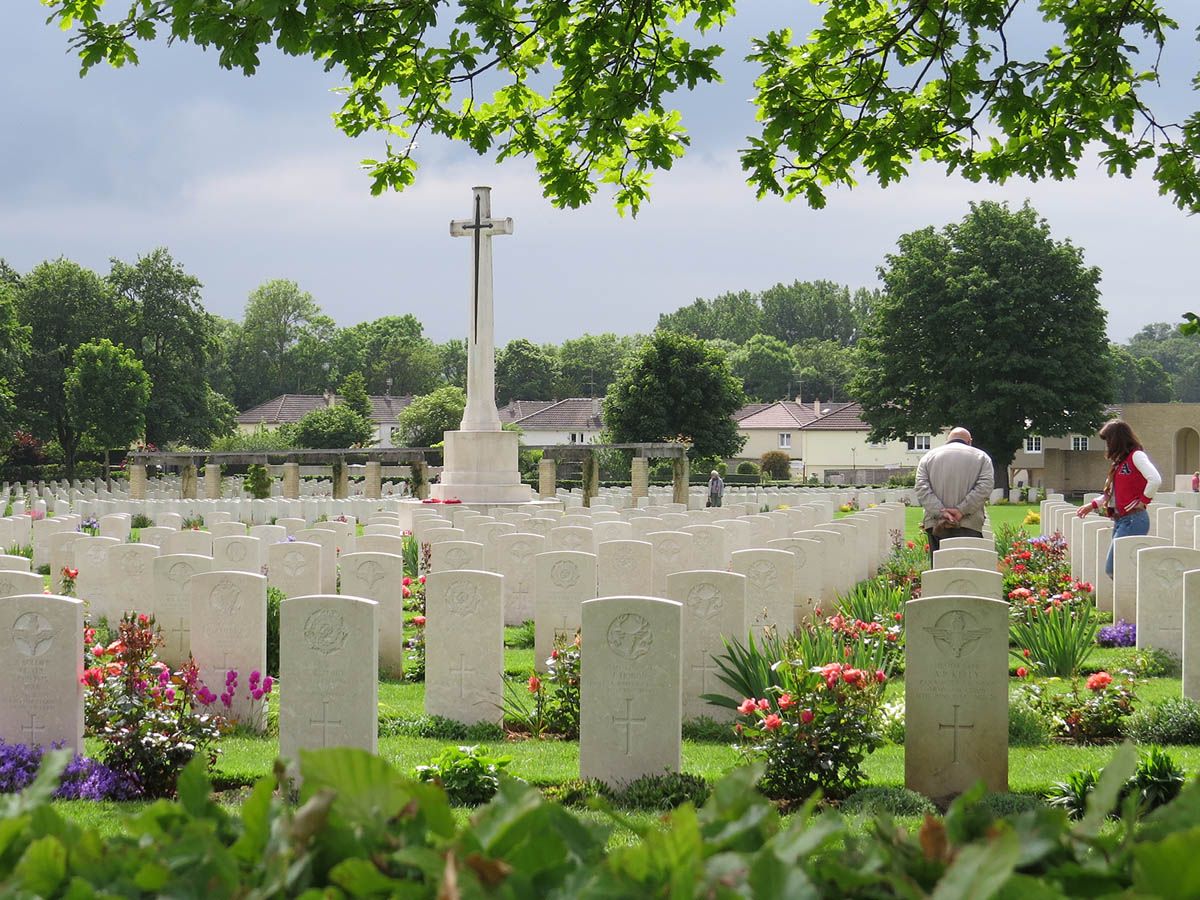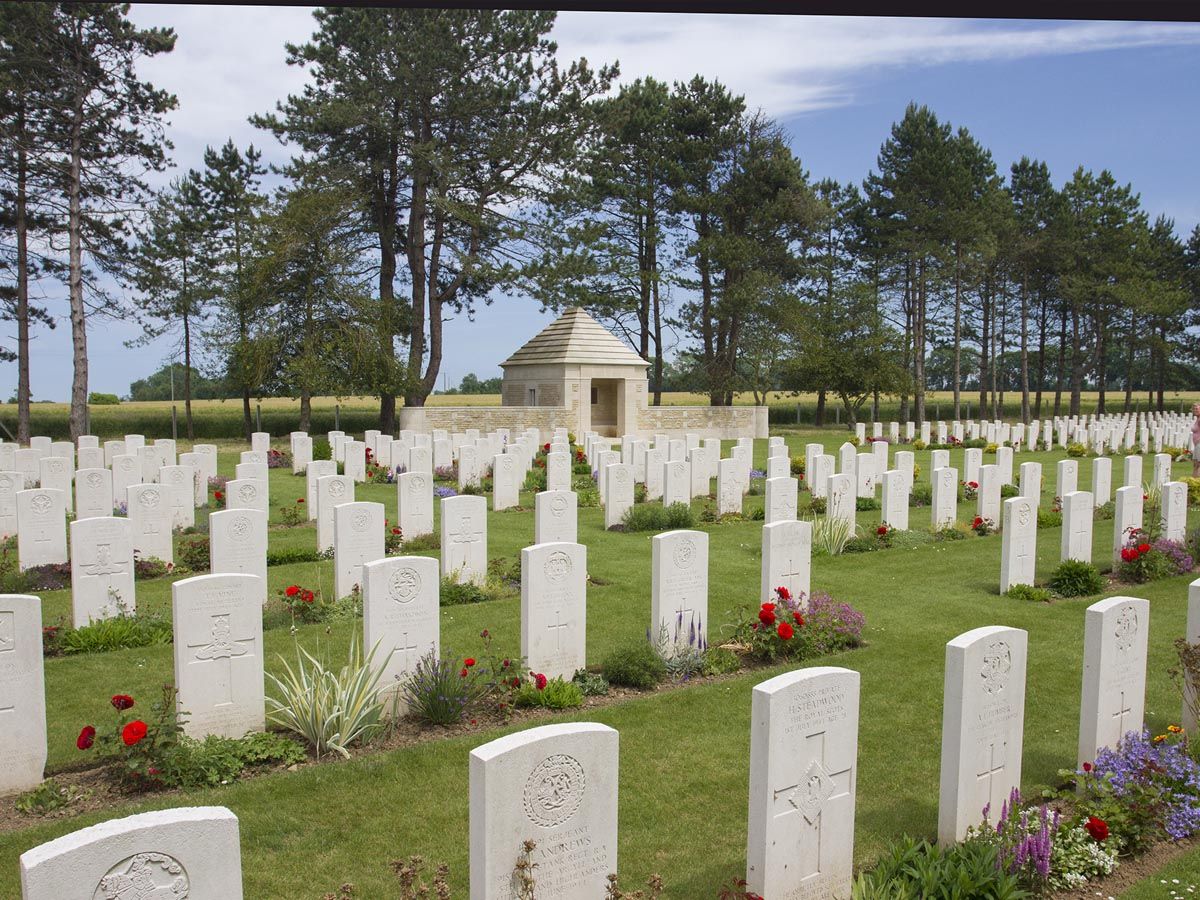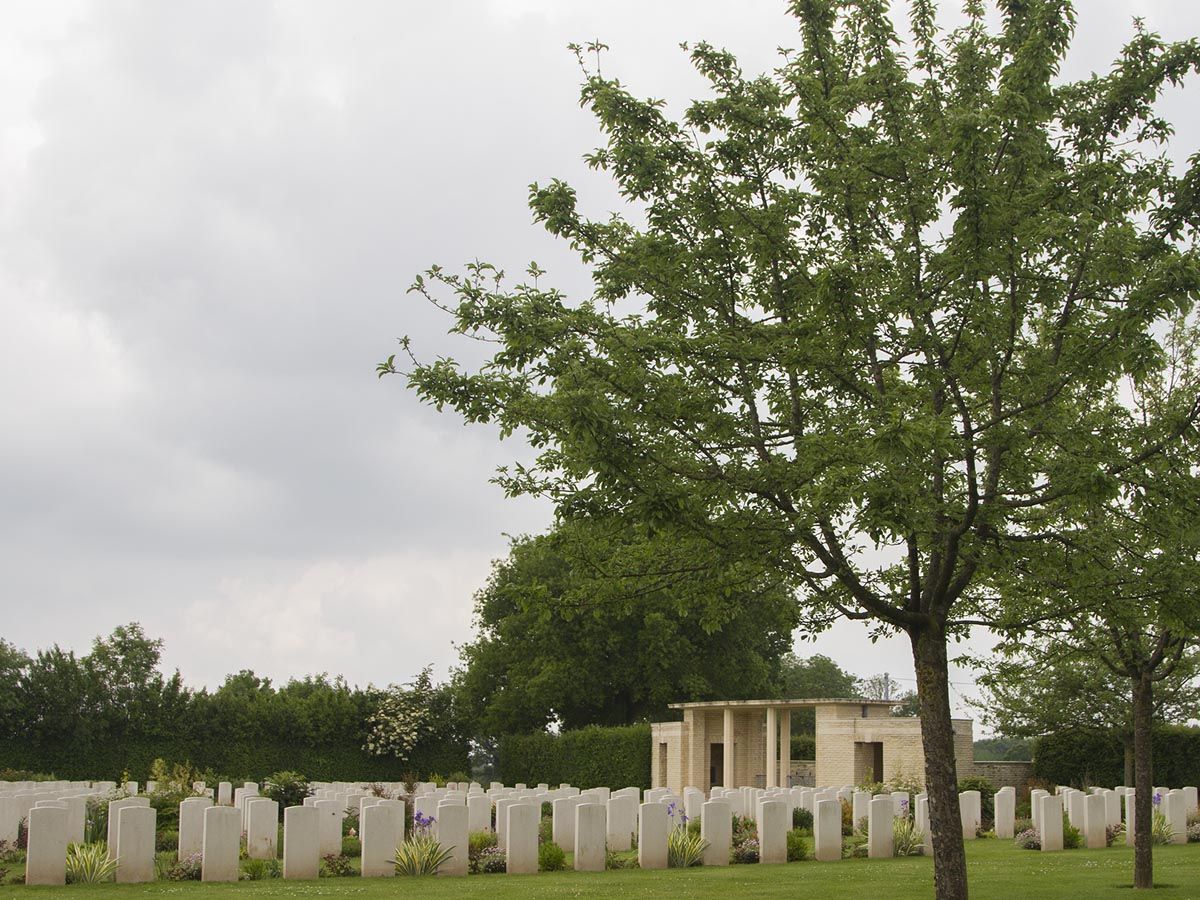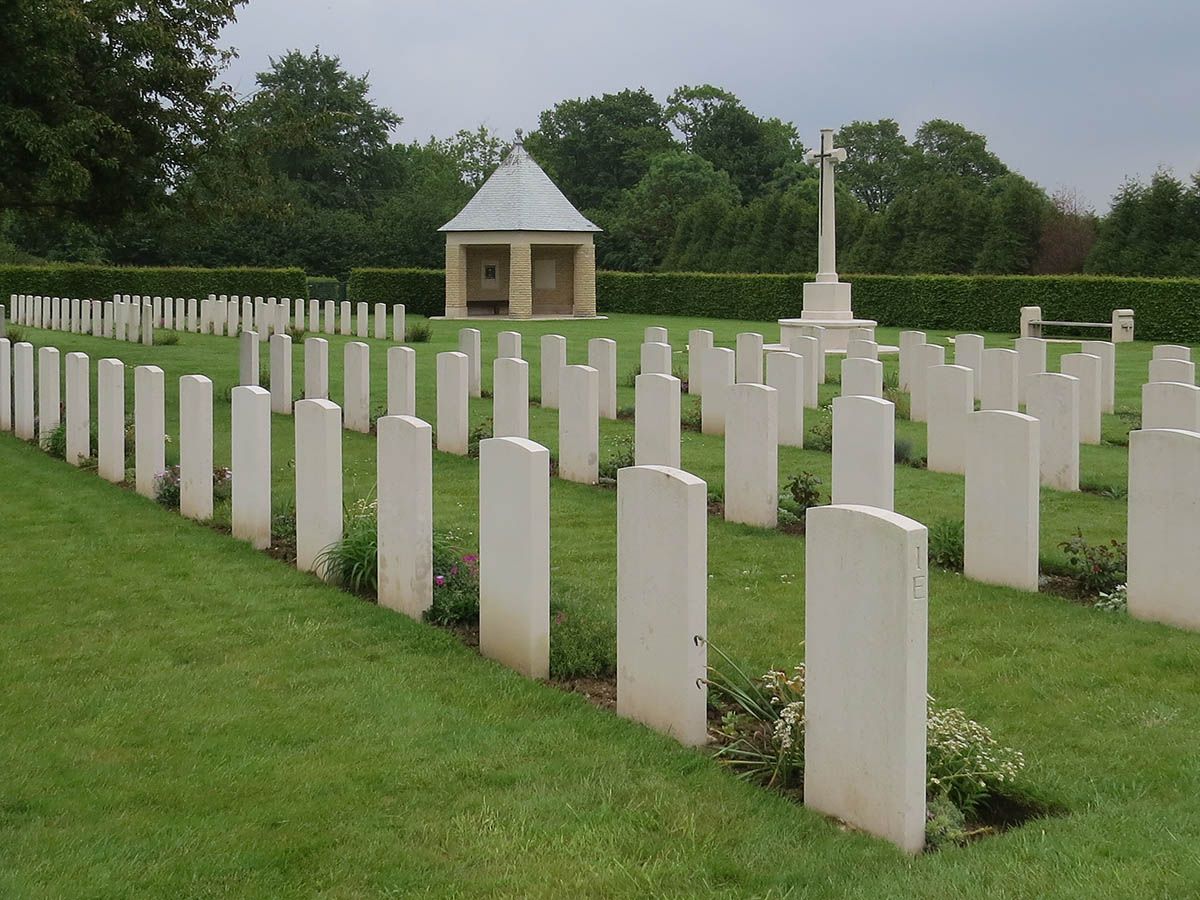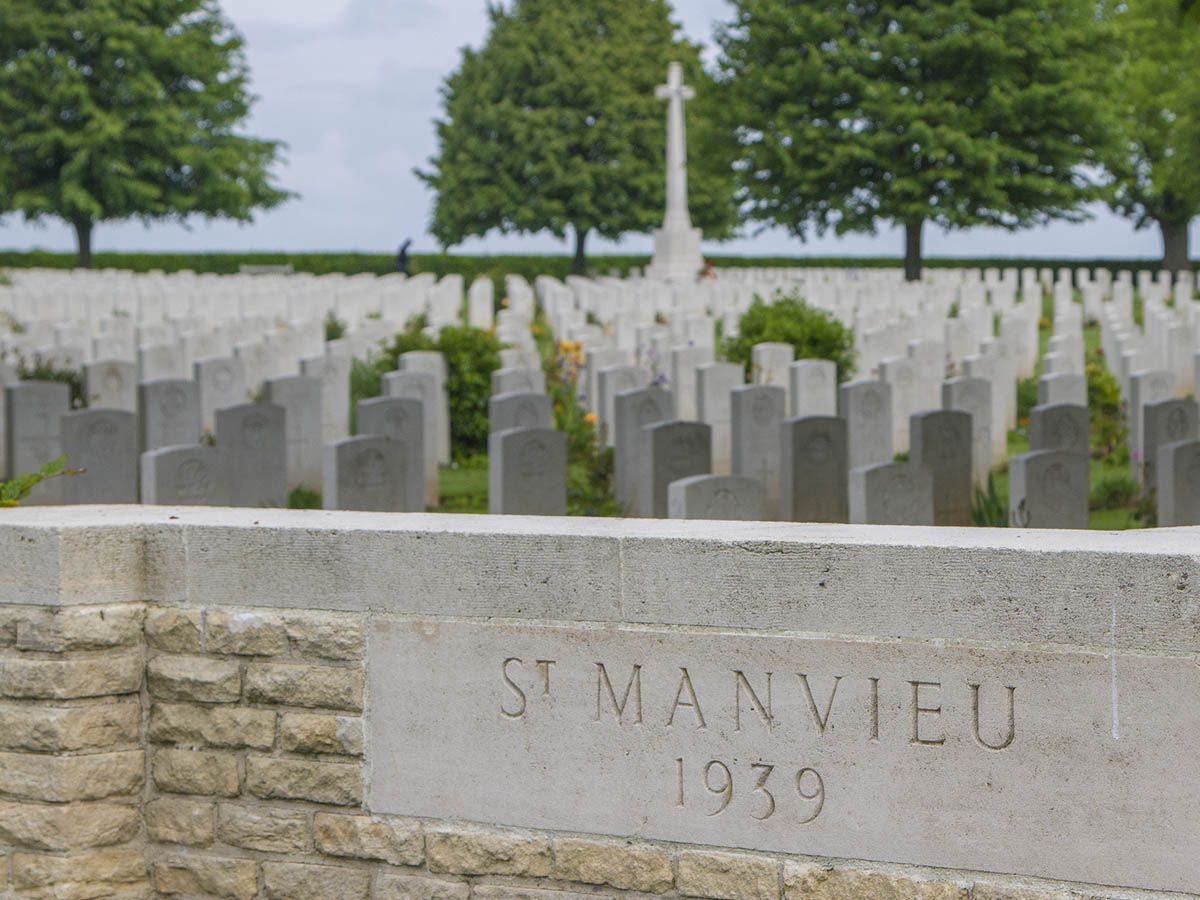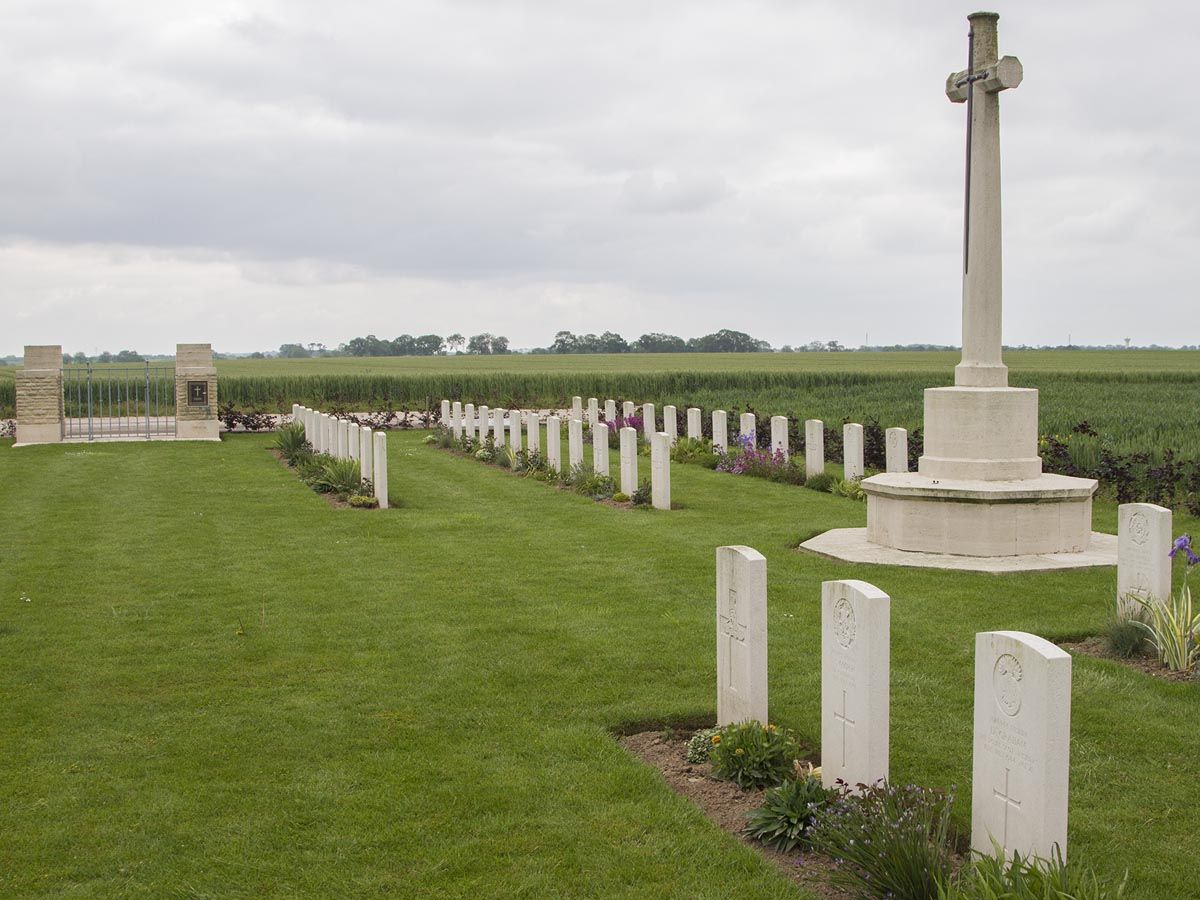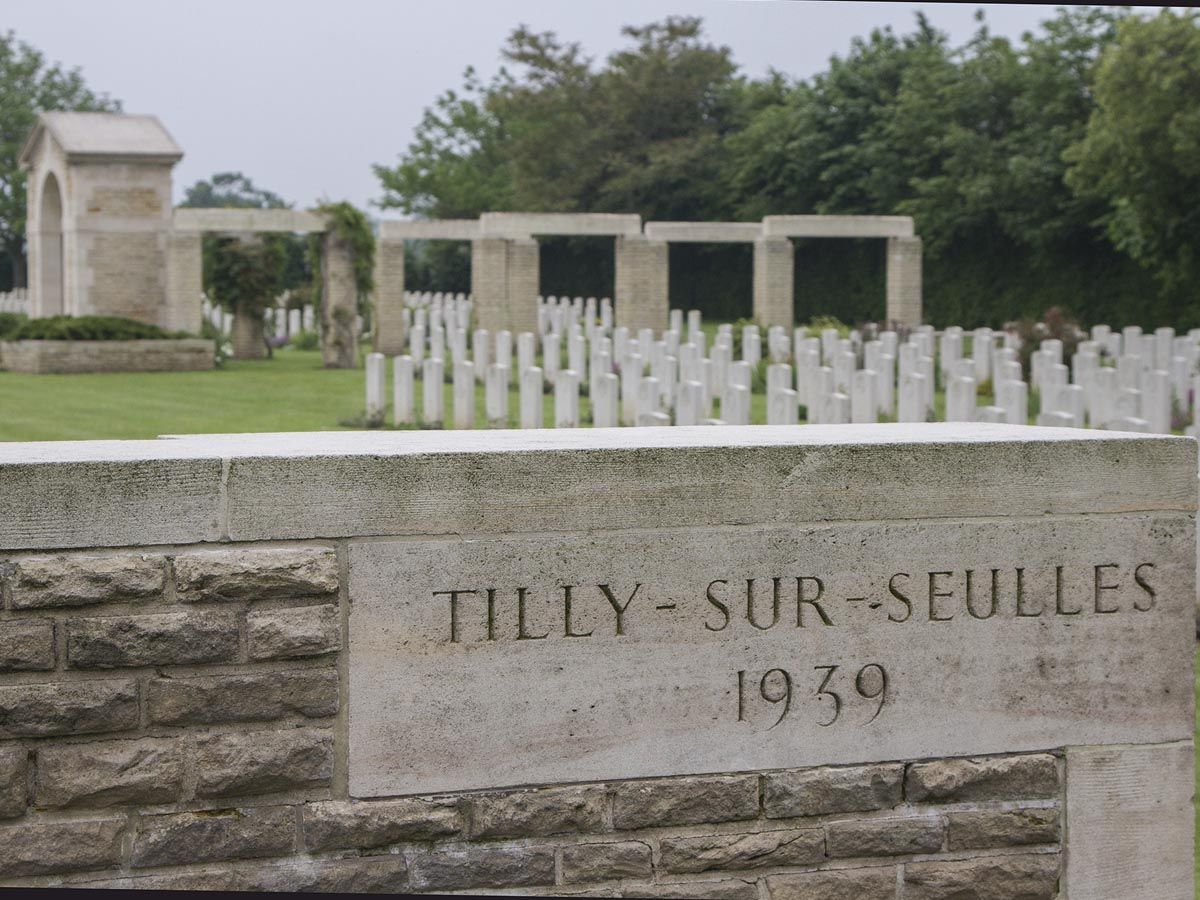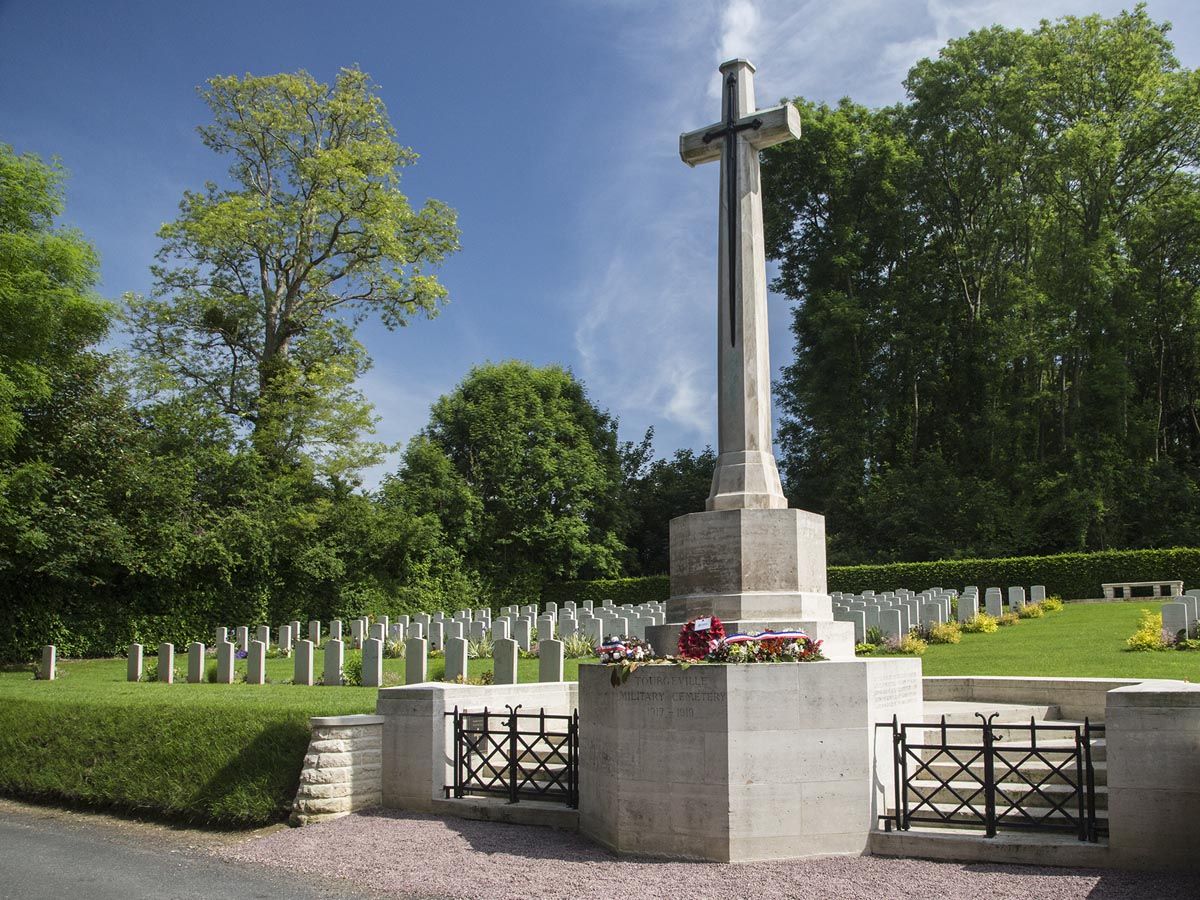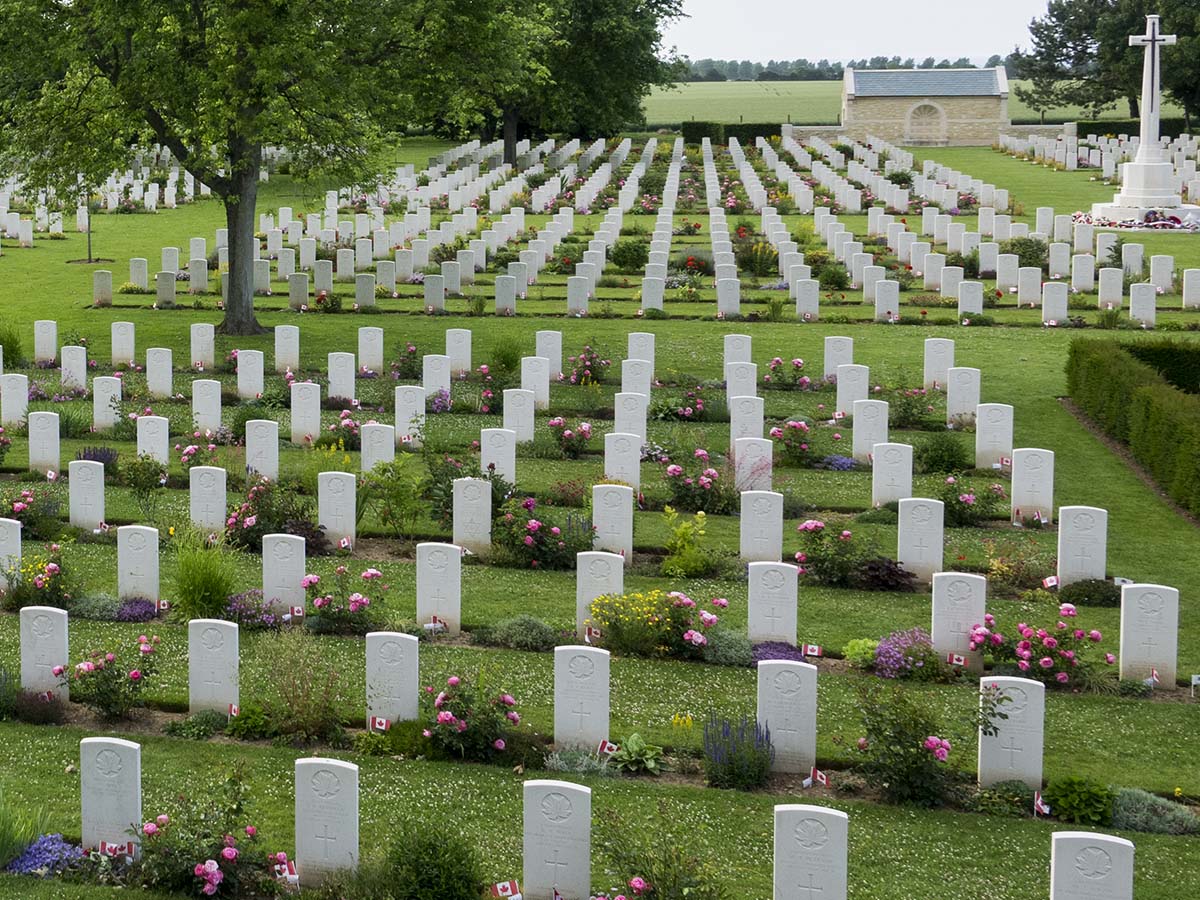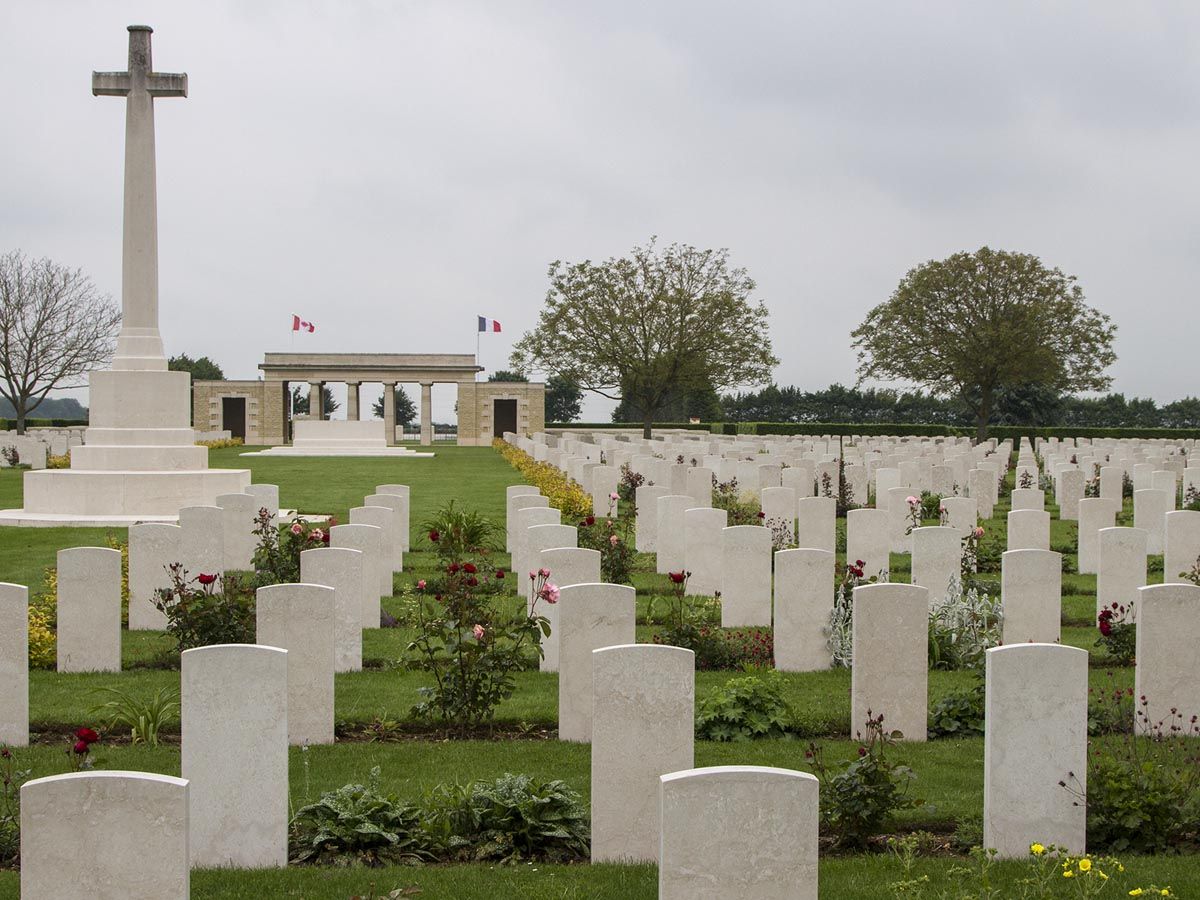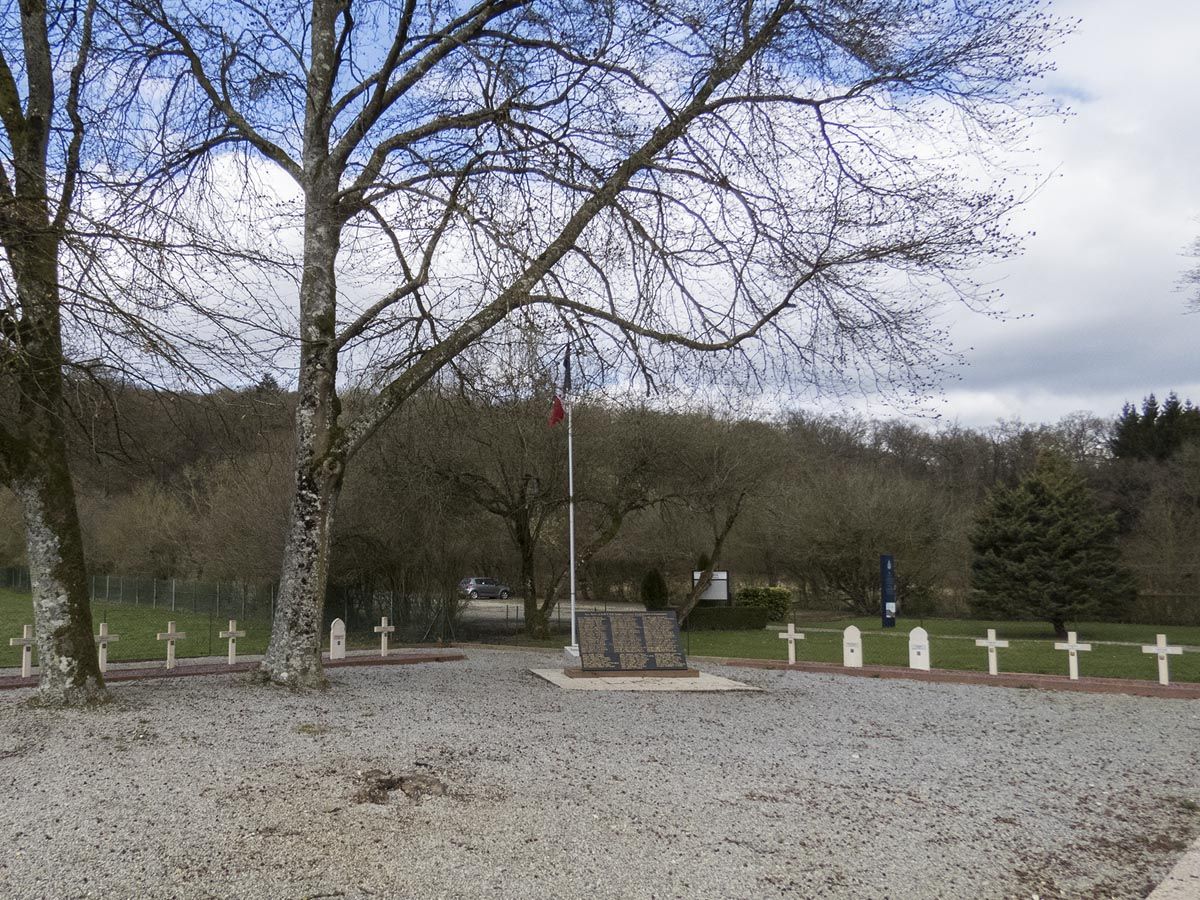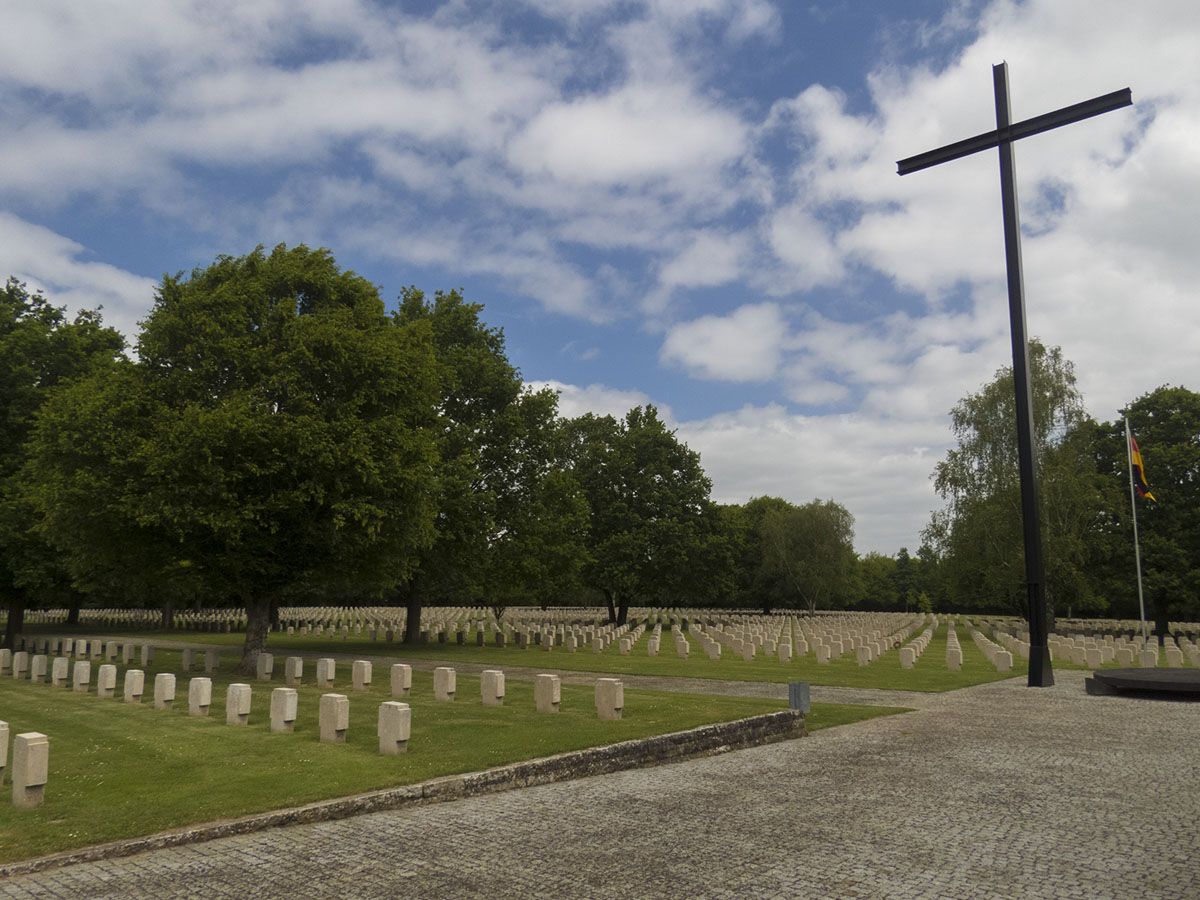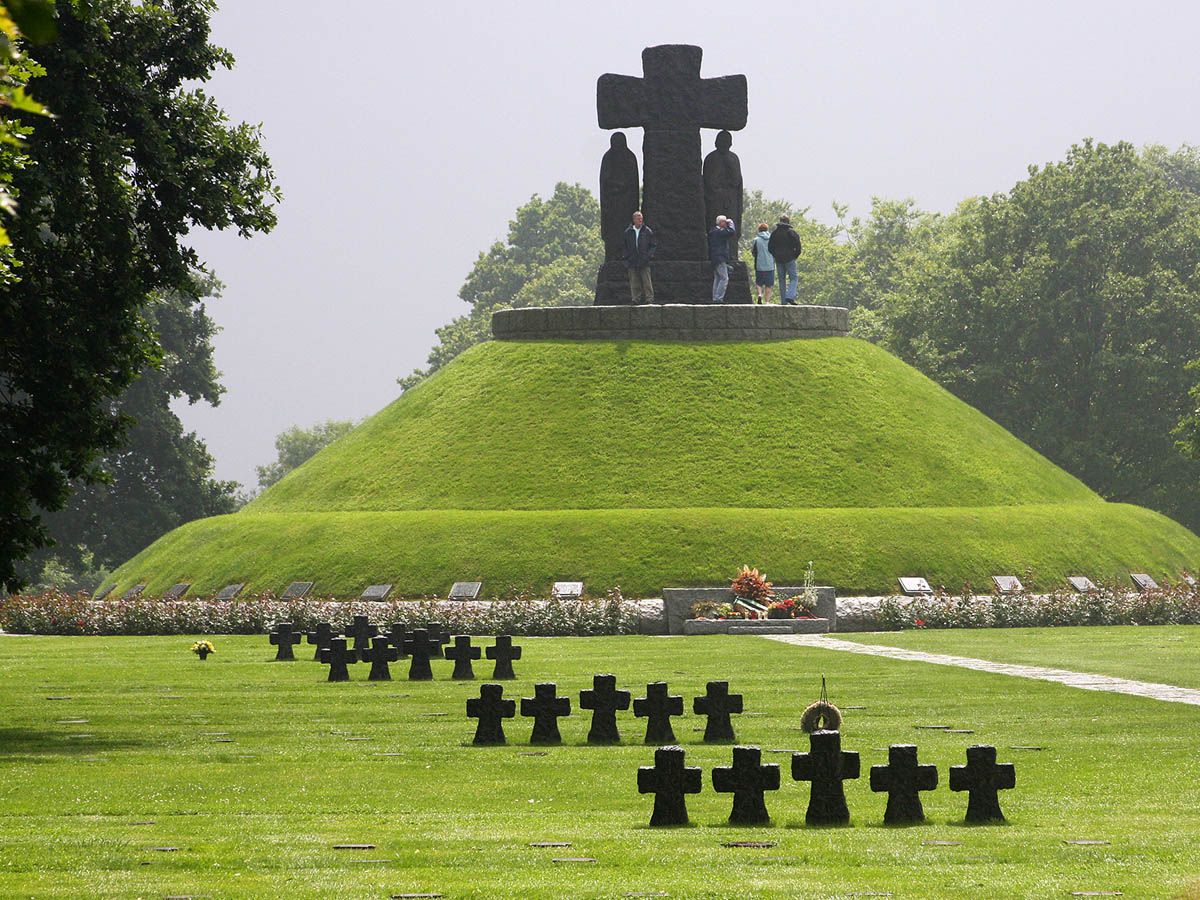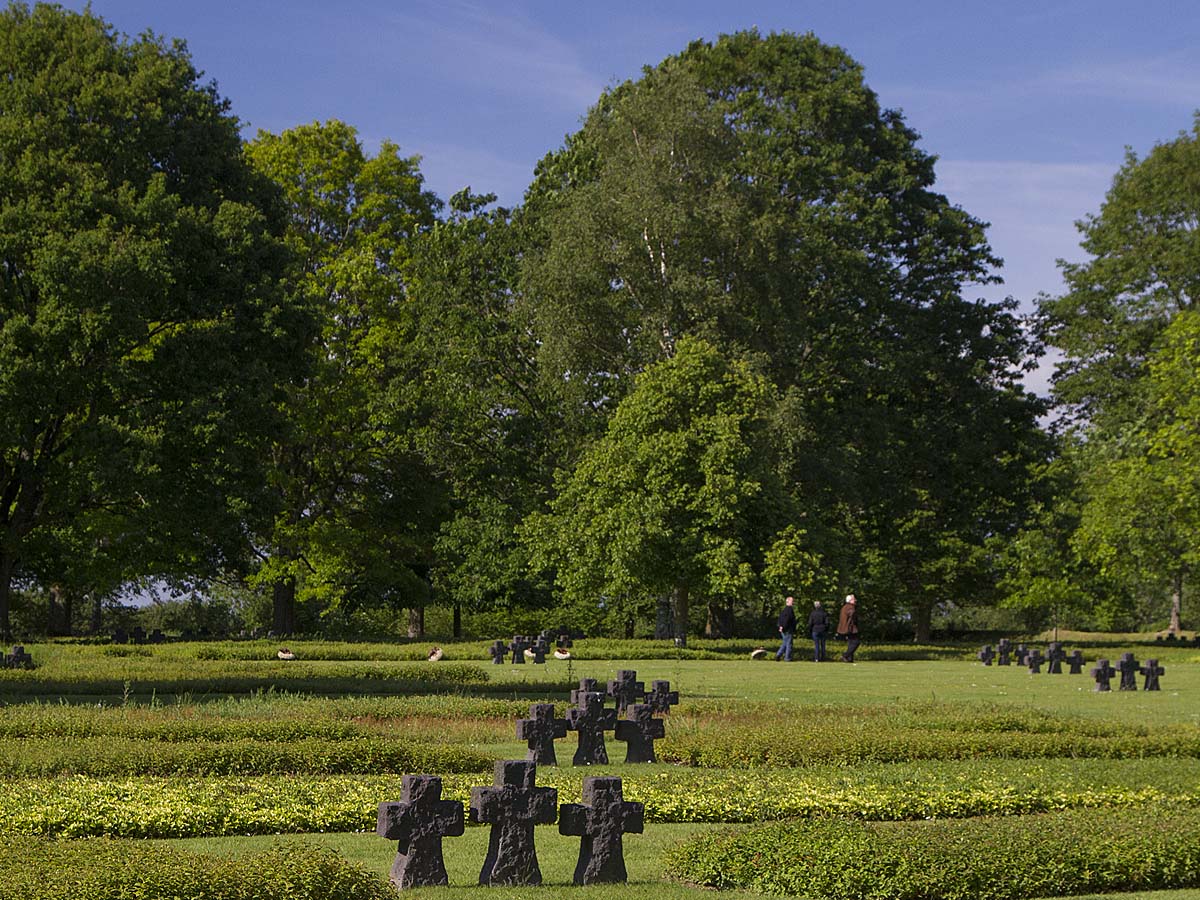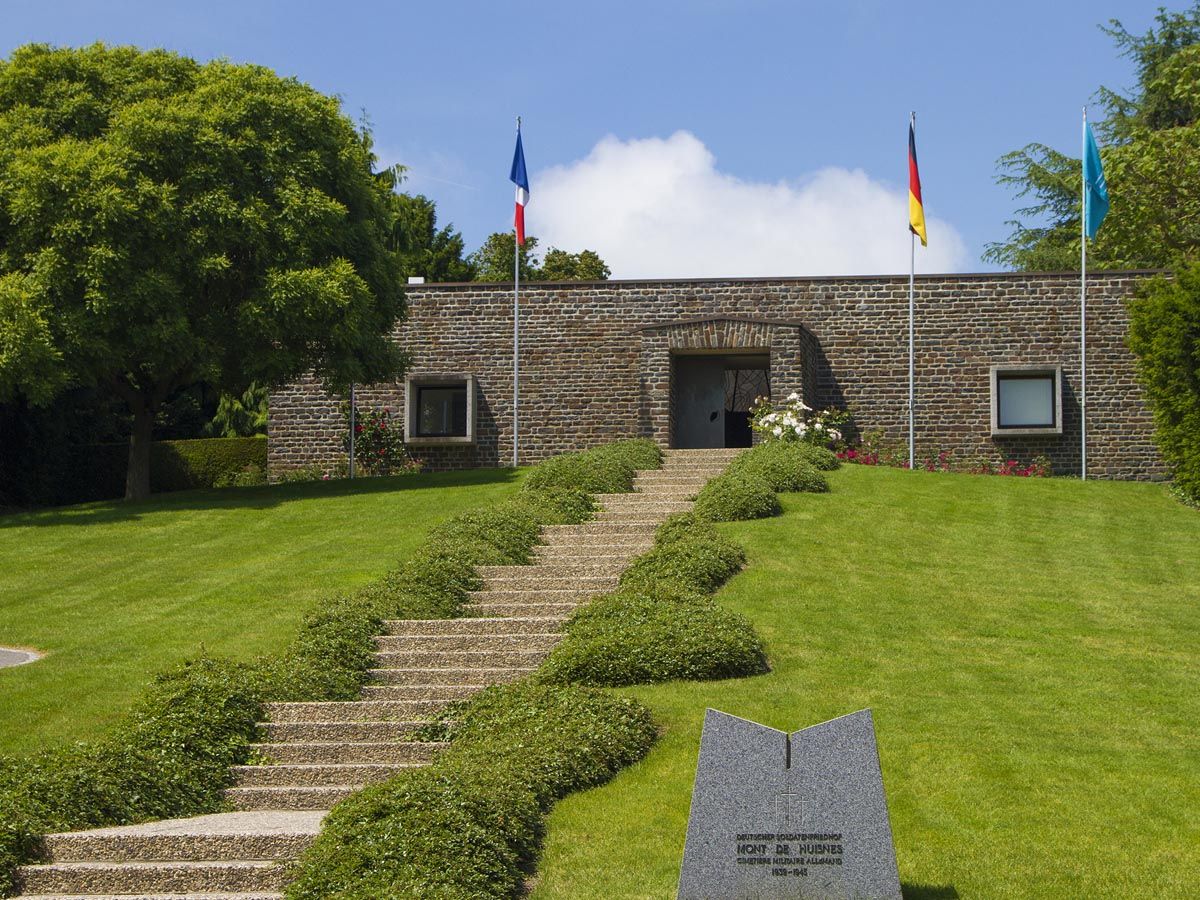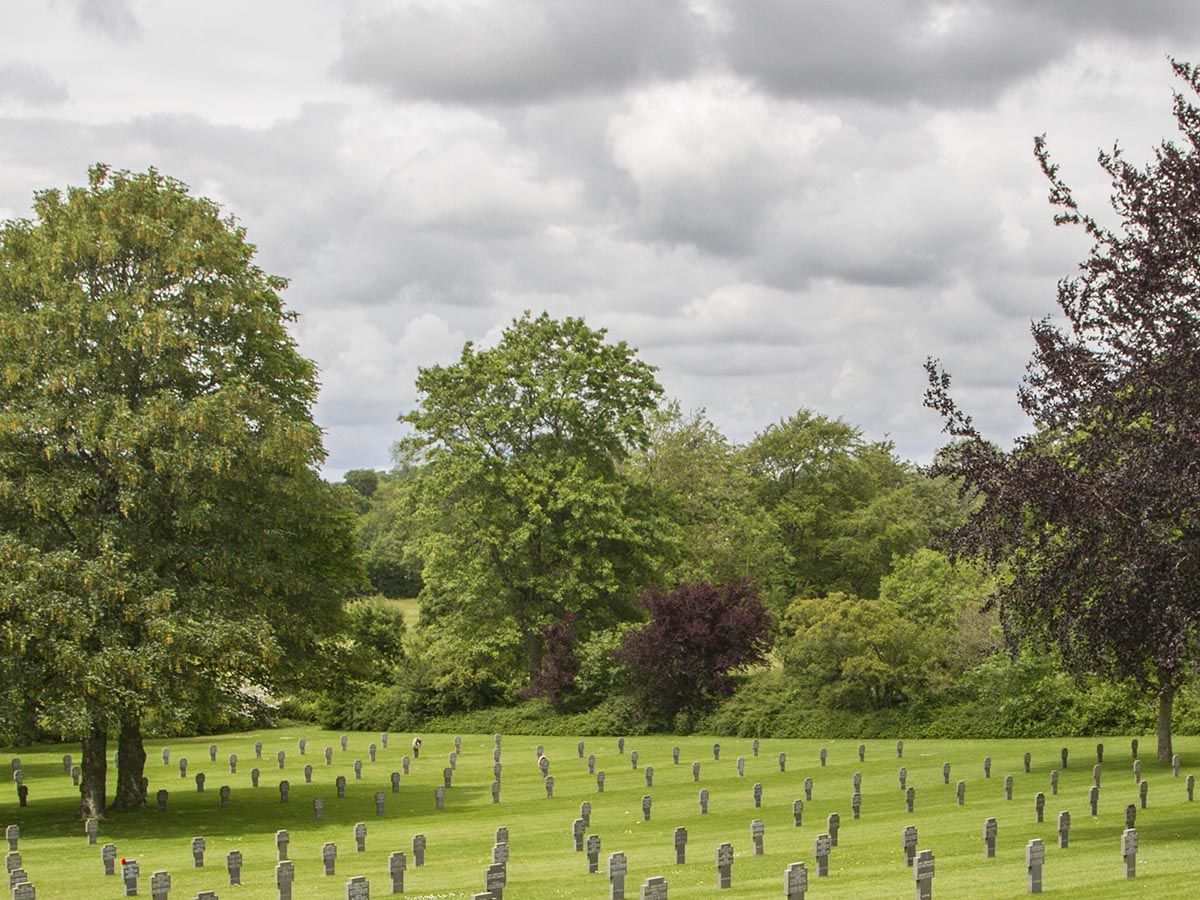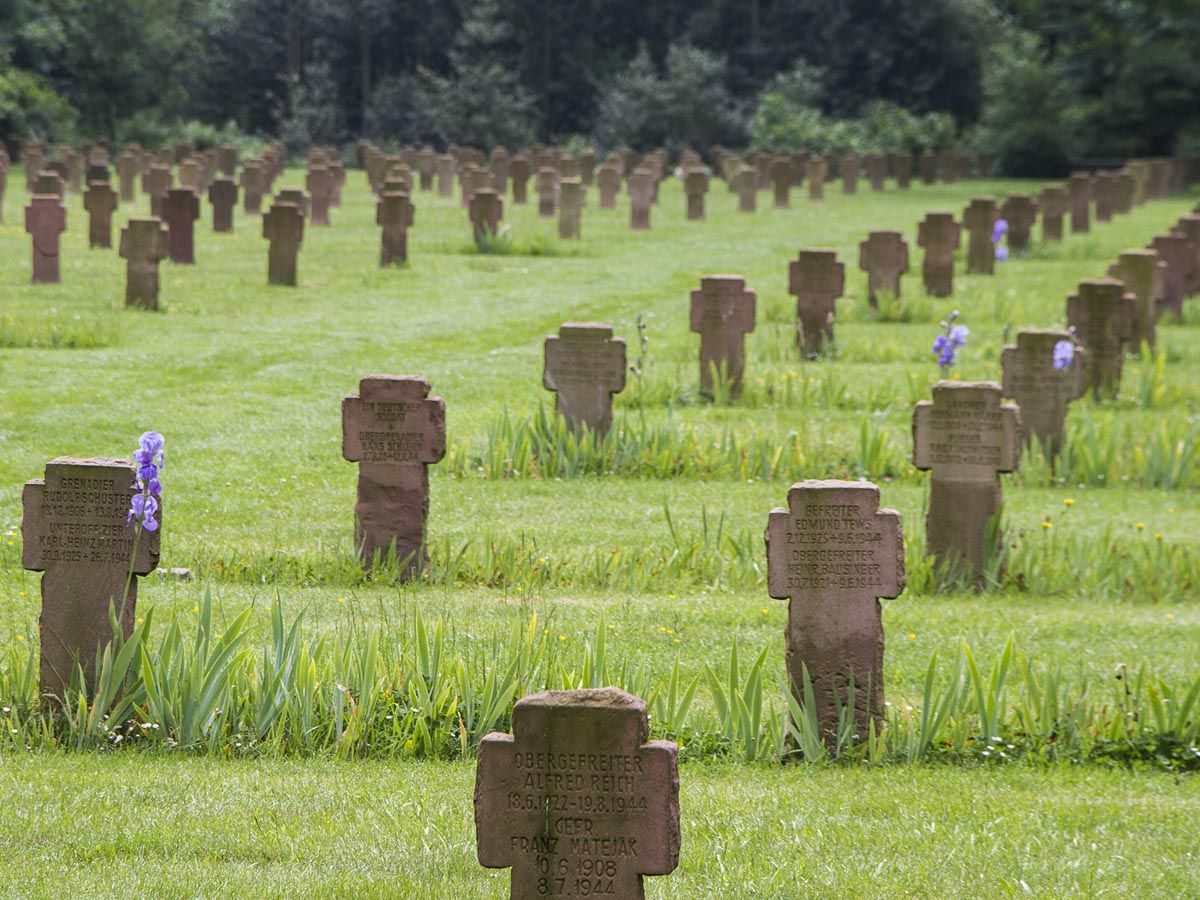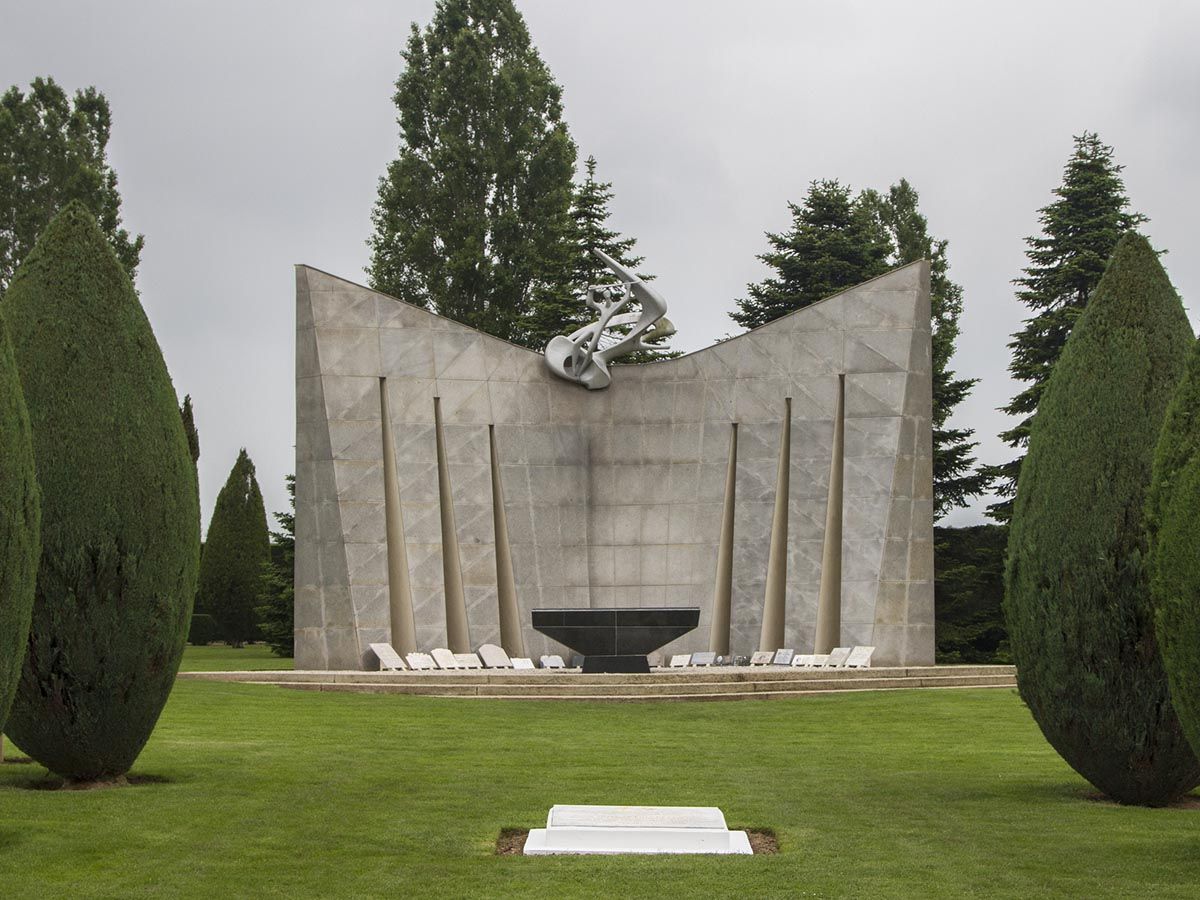Nestled between Caen and Falaise in the picturesque Normandy countryside, the Urville-Langannerie Polish War Cemetery stands as a poignant memorial to the brave Polish soldiers who fought for France’s liberation during World War II. As you wander through this solemn site, you’ll find yourself surrounded by 696 graves arranged in a distinctive V-shaped pattern, each representing a life sacrificed in the struggle against Nazi occupation. This cemetery, inaugurated in October 1946, is the only Polish military cemetery in Normandy and serves as the final resting place for members of the 1st Polish Armoured Division who fell during the critical battles following D-Day.
When you visit this special place, you’ll notice a striking monument at the center of the V-formation, topped with an impressive sculpture that commands attention across the peaceful grounds. Many of these soldiers gave their lives during the fierce fighting to capture Caen and in the decisive battle to close the Falaise Gap in 1944 – military actions that proved crucial to the Allied victory in Normandy. The cemetery offers a quiet space for reflection on the international nature of the forces that came together to liberate Europe.
History and Significance
The Urville-Langannerie Polish War Cemetery stands as a powerful tribute to the brave Polish soldiers who gave their lives during the liberation of France in 1944. This special site honors their sacrifice and preserves an important chapter in the story of World War II.
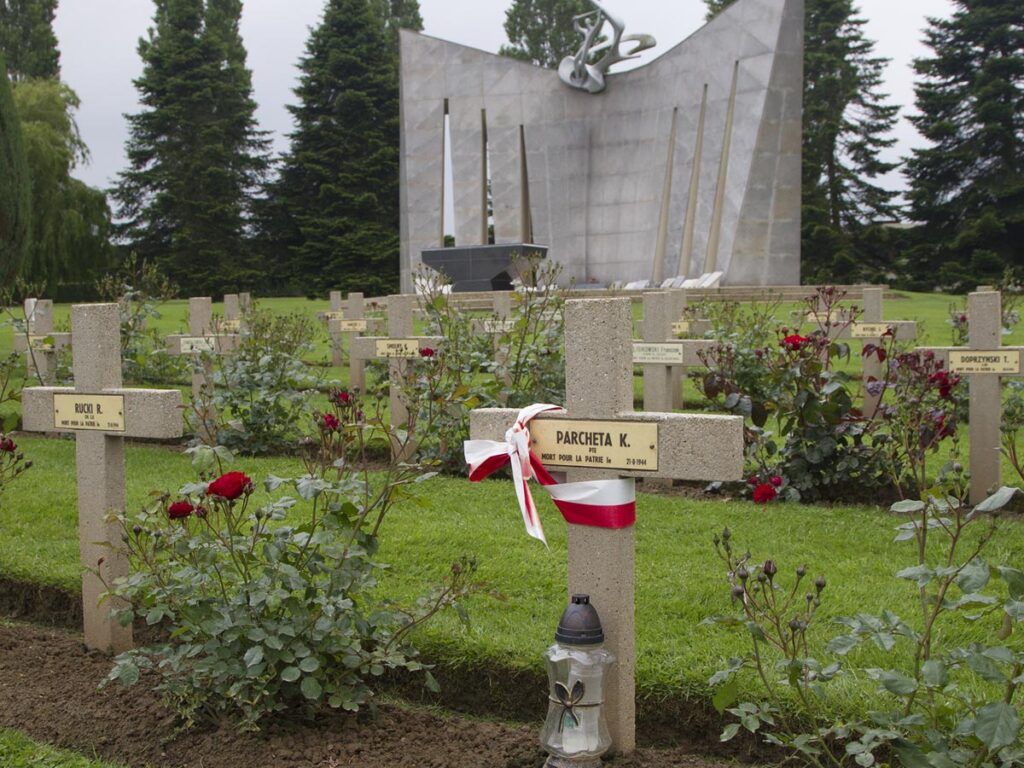
The Polish Contribution to Normandy
The 1st Polish Armoured Division played a crucial role in the Normandy campaign. These soldiers fought valiantly alongside Allied forces after D-Day, helping to secure victory in Northwestern Europe. Under the command of General Stanisław Maczek, the Polish troops showed remarkable courage during the battle to close the Falaise Pocket in August 1944.
Their mission was especially challenging as they held strategic positions blocking German escape routes. Many gave their lives during intense fighting around Chambois and Mont Ormel (known as “The Mace”).
Despite being far from their homeland, these Polish soldiers demonstrated extraordinary dedication to the Allied cause. Their contribution helped seal the fate of German forces in Normandy and accelerated the liberation of France.
The Urville-Langannerie Site
The cemetery was officially inaugurated in October 1946, becoming the final resting place for Polish soldiers who fell during the liberation battles. It remains the only Polish World War II cemetery in France, making it particularly significant for both nations.
Located about 17 kilometers south of Caen, the site contains 696 graves. The cemetery’s design reflects Polish military traditions while harmonizing with the Normandy landscape.
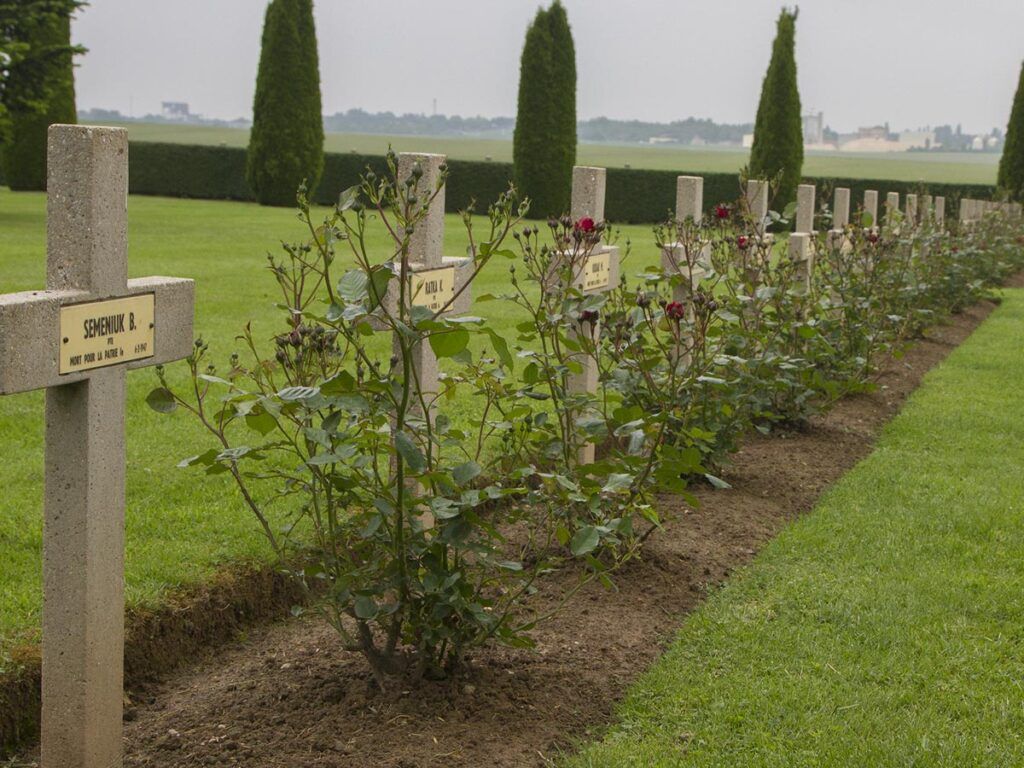
Each headstone bears the name, rank, and date of death of the fallen soldier. Many visitors are moved by the uniform rows of white markers stretching across the green grounds. The central monument features Polish national symbols that connect these heroes to their distant homeland.
D-Day and Operation Overlord
Though the Polish forces weren’t part of the initial D-Day landings on June 6, 1944, they arrived in Normandy in late July as part of the broader Operation Overlord campaign. Their timing placed them at a critical juncture in the battle for France.
Under General Montgomery’s overall Allied command, the Polish troops were tasked with helping to encircle German forces retreating eastward. Their position became essential in closing what became known as the Falaise Pocket.
The fighting was fierce. German units desperately attempted to break through Polish lines to escape encirclement. Many of those now buried at Urville-Langannerie lost their lives during these intense August battles.
The Cemetery Layout
The Urville-Langannerie Polish War Cemetery features a thoughtful design that honors the sacrifice of Polish soldiers who fell during the liberation of Normandy. The cemetery’s organization reflects both military precision and respectful commemoration.
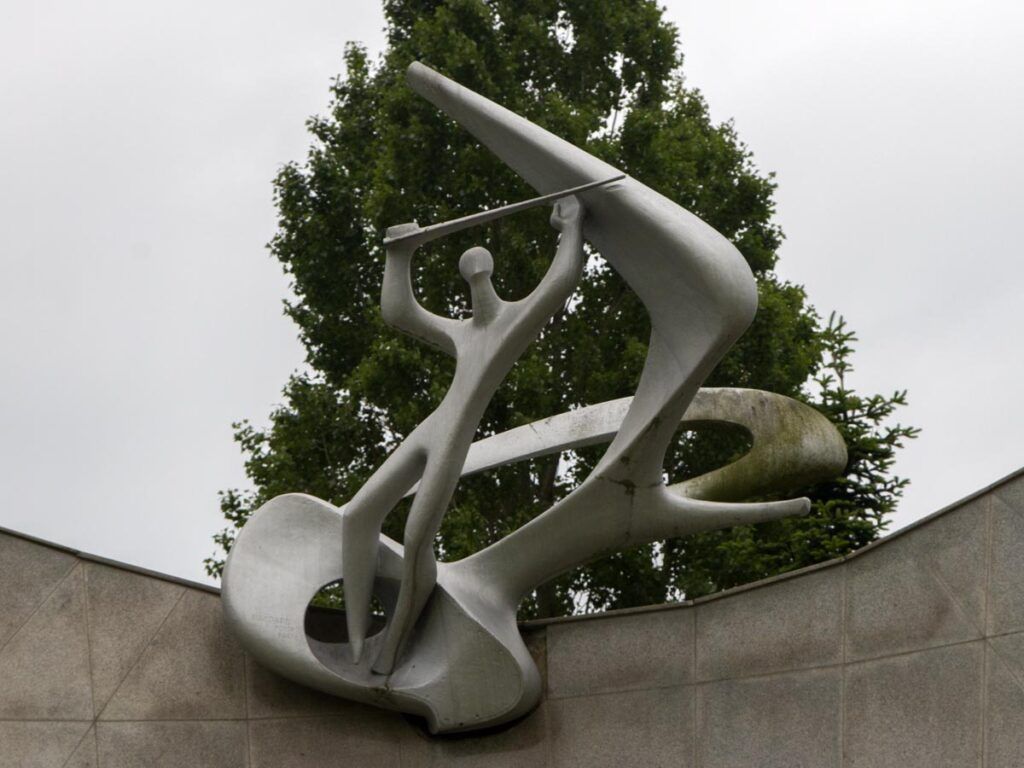
Graves and Interments
The cemetery contains between 615 and 696 graves, primarily Polish soldiers from the 1st Polish Armoured Division who gave their lives during the 1944 Normandy campaign. Most of these brave men fell during the fierce fighting to capture Caen and in the crucial battle to close the Falaise Gap.
The graves are arranged in neat, orderly rows that reflect military precision. Each grave is marked with a simple but dignified headstone bearing the soldier’s name, rank, unit, and dates of birth and death when known.
You’ll notice the graves are grouped by military units, allowing families and visitors to find specific soldiers more easily. Many of these men were paratroopers who jumped into combat during the liberation operations.
Memorials and Monuments
At the center of the cemetery stands a prominent memorial commemorating the sacrifice of the Polish forces. The main monument features inscriptions in both Polish and French, honoring these soldiers who fought so far from their homeland.
Several smaller monuments throughout the grounds pay tribute to specific Polish military units that participated in the Normandy campaign. These include recognition of elite paratrooper units whose members are interred here.
You’ll find a visitors’ book near the entrance where you can leave your thoughts and respects. Many visitors draw comparisons to the “Band of Brothers” spirit that united these Polish soldiers fighting alongside Allied forces.
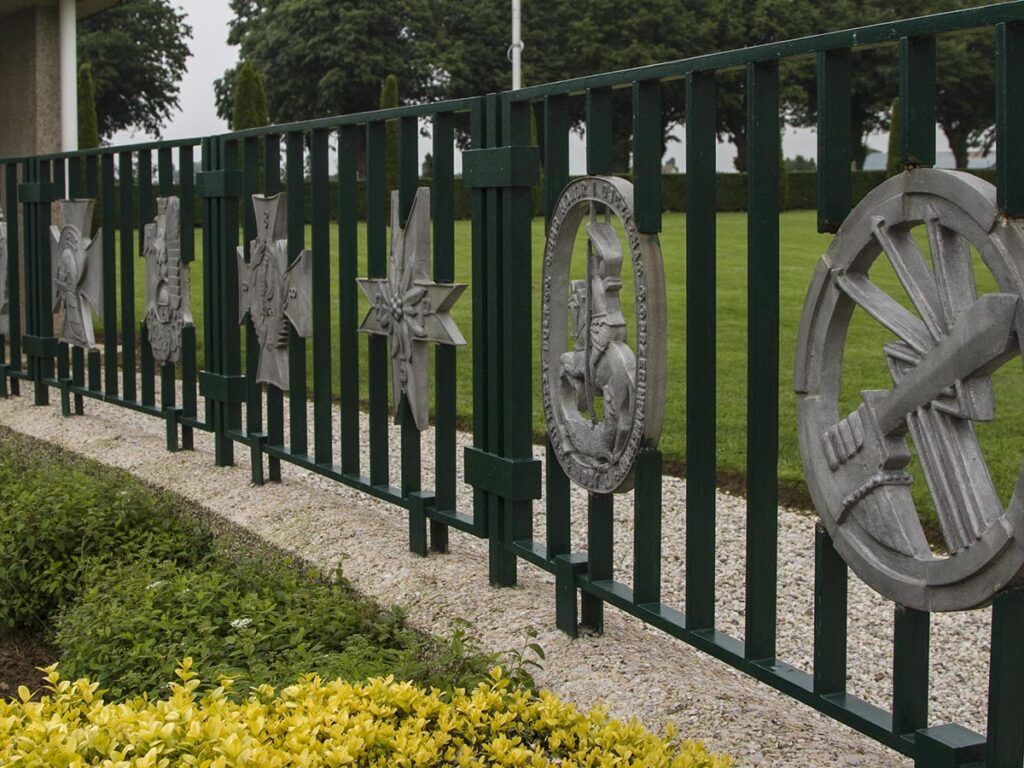
Landscaping and Maintenance
The cemetery grounds are meticulously maintained with manicured lawns and carefully pruned trees that provide shade and quiet reflection spaces. Seasonal flowers add color throughout the year, with special attention paid to Polish national colors during important commemorative dates.
You’ll appreciate the peaceful atmosphere created by the thoughtful landscaping that encourages contemplation. The cemetery’s layout includes wide pathways that make navigation easy for visitors of all abilities.
Polish and French flags fly at the entrance, gently waving in the Normandy breeze. The Commonwealth War Graves Commission oversees the ongoing care and preservation of this sacred ground, ensuring it remains a fitting tribute to those who rest here.
Ceremonies and Events
The Urville-Langannerie Polish War Cemetery hosts several important ceremonies throughout the year that honor the 615 Polish soldiers who gave their lives during the liberation of France in 1944. These events provide visitors with meaningful ways to pay respect and learn about this crucial chapter of World War II history.
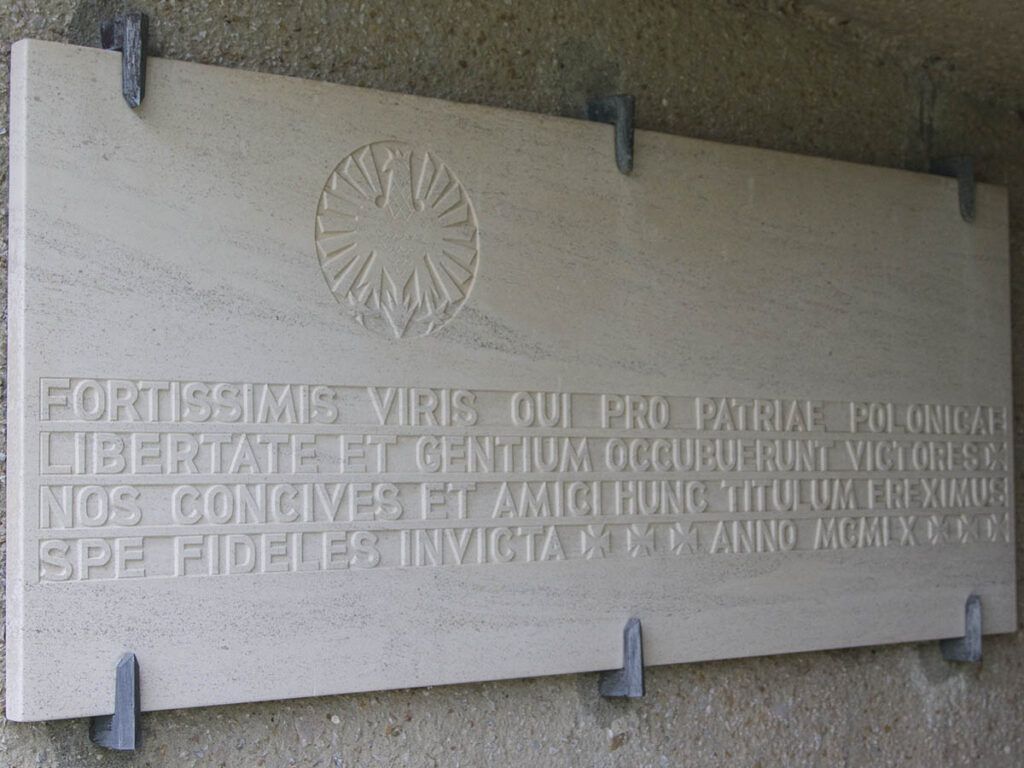
Annual Commemorations
Each year on May 8 (Victory in Europe Day) and August 21 (anniversary of the 1st Polish Armoured Division’s arrival in Normandy), special ceremonies are held at the cemetery. These solemn events feature military honors, wreath-laying ceremonies, and speeches by Polish and French officials. Veterans’ organizations and families of the fallen soldiers often attend.
The most significant commemoration happens during D-Day anniversary events in early June. As part of the broader Normandy landing celebrations, the Polish cemetery receives special attention, highlighting the crucial role Polish forces played following the D-Day landings.
If you’re planning to attend any ceremony, arrive 30 minutes early and dress respectfully. The events typically last 1-2 hours and are open to the public.
Educational Programs
The cemetery offers several educational opportunities to help visitors understand the Polish contribution to the liberation of Normandy. Guided tours are available by appointment, where knowledgeable historians explain the 1st Polish Armoured Division’s journey and sacrifices.
For students and school groups, the cemetery administration provides special programs that include:
- Interactive history sessions
- Documentary screenings
- Meetings with historians or veterans’ families
- Educational materials about the Polish forces in WWII
These programs connect particularly well with the D-Day landing sites nearby, creating a more complete understanding of the Allied campaign. You can request educational materials in advance through the cemetery’s administration office or the Normandy Tourism website.
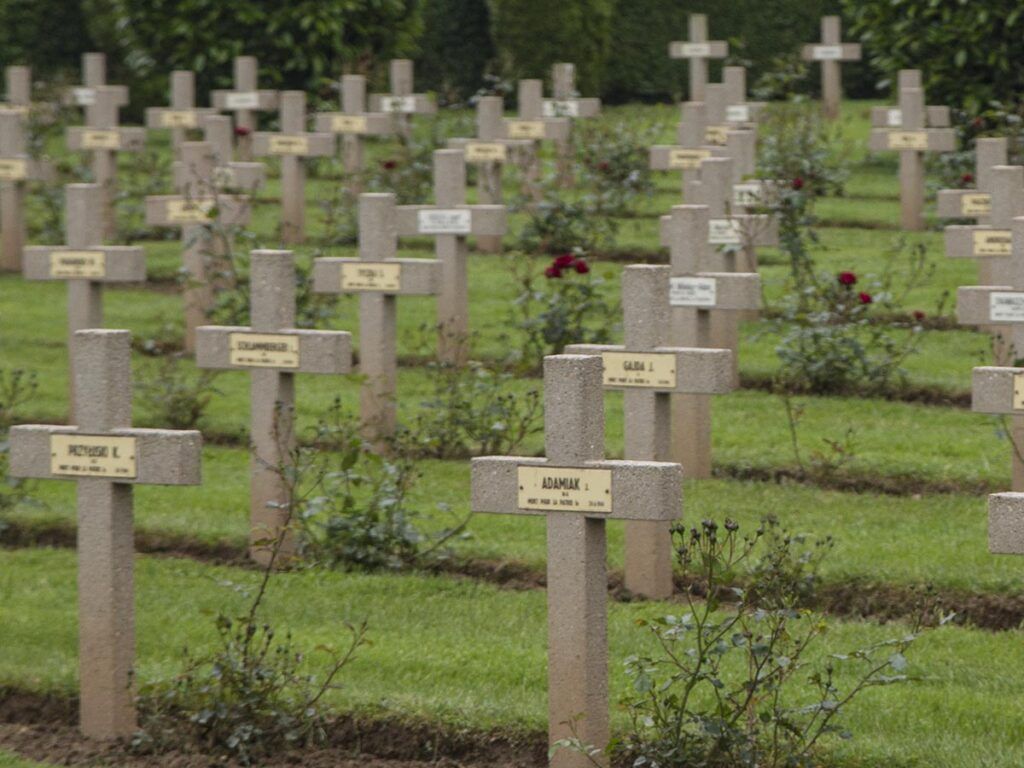
Many visitors combine their educational experience here with visits to other D-Day sites to gain a more comprehensive view of the 1944 liberation campaign.
Visiting the Cemetery
The Urville-Langannerie Polish War Cemetery offers a powerful and moving experience for visitors seeking to honor the brave Polish soldiers who fought for France’s liberation. Planning your visit thoughtfully will ensure a meaningful and respectful experience at this important memorial site.
Location and Access
The cemetery is located between Caen and Falaise in Normandy, making it accessible as part of a broader D-Day sites tour. You’ll find it in the small commune of Urville-Langannerie, approximately 25 kilometers south of Caen. The site is reachable by car via the N158 highway, with adequate parking available for visitors.
Public transportation options are limited, so renting a car is your best bet if you’re not on an organized tour. The cemetery is open daily to visitors, typically from sunrise to sunset, and there is no admission fee.
Look for the distinctive entrance with its Polish insignia—it’s a subtle but powerful indicator that you’ve arrived at this special place of remembrance.
Best Times to Visit
Spring and early summer (April through June) offer the most pleasant weather for visiting the cemetery, with mild temperatures and blooming flowers enhancing the peaceful atmosphere. The anniversary of the Normandy landings in early June may feature special commemorative events.
Early mornings provide tranquil moments for reflection before other tourists arrive. For photography enthusiasts, the golden hour just after sunrise creates a solemn, dignified light across the cemetery grounds.
Try to avoid visiting during heavy rain as the experience will be less comfortable when exploring the outdoor site. Weekdays generally have fewer visitors than weekends, offering a more solitary experience for those seeking quiet contemplation.
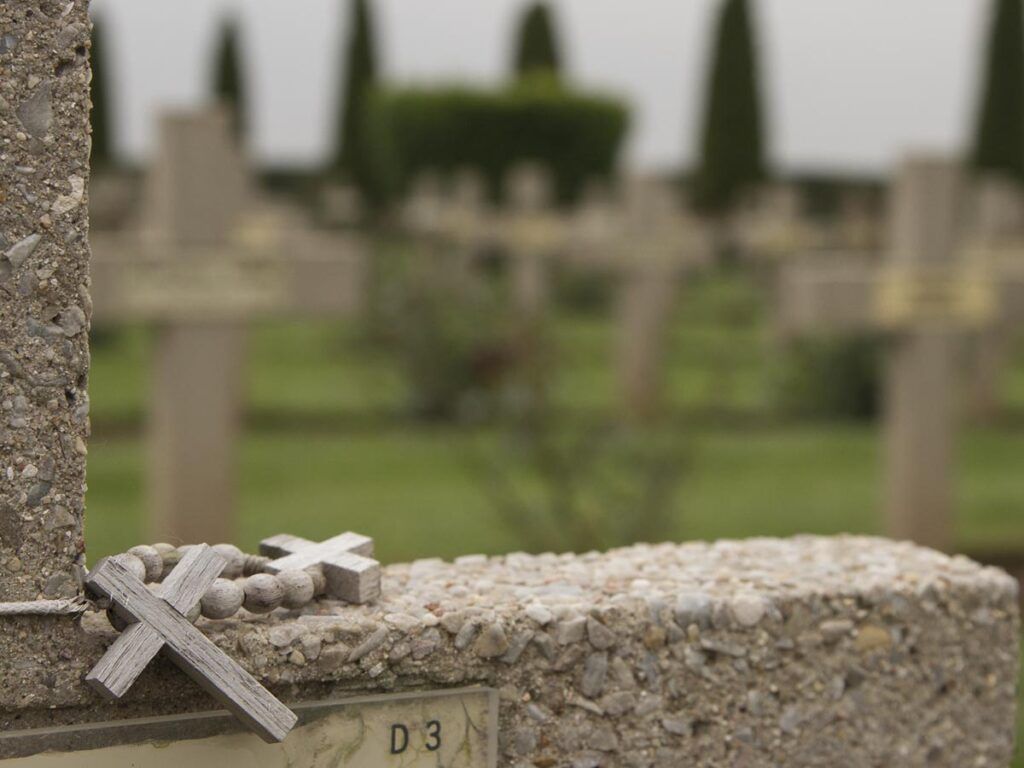
Respecting the Site
As with all military cemeteries, showing proper respect is essential. Remember that this is the final resting place of 615 Polish soldiers who made the ultimate sacrifice during the 1944 liberation of France.
Keep your voice low while on the grounds, and supervise children closely. Photography is permitted, but avoid disruptive behavior or posing inappropriately with gravestones.
Formal dress isn’t required, but modest attire shows respect for the fallen. If you wish to leave a tribute, small flags or individual flowers are appropriate. Avoid leaving artificial items that could become litter.
The clean, orderly appearance of the cemetery reflects the dignity of those buried here—help maintain this atmosphere by taking any trash with you when you leave.
Guided Tours and Itineraries
While the cemetery doesn’t offer permanent on-site guides, several Normandy battlefield tour companies include the Polish Cemetery in their itineraries. These guides provide valuable historical context about the Polish 1st Armoured Division’s crucial role in closing the Falaise Gap.
You can easily incorporate this site into a self-guided tour of Normandy’s WWII landmarks. Consider visiting the nearby Falaise Pocket memorials to understand the strategic importance of the Polish forces’ contribution.
Allow yourself about 45 minutes to one hour to properly experience the cemetery. The central memorial and neat rows of crosses deserve unhurried contemplation.
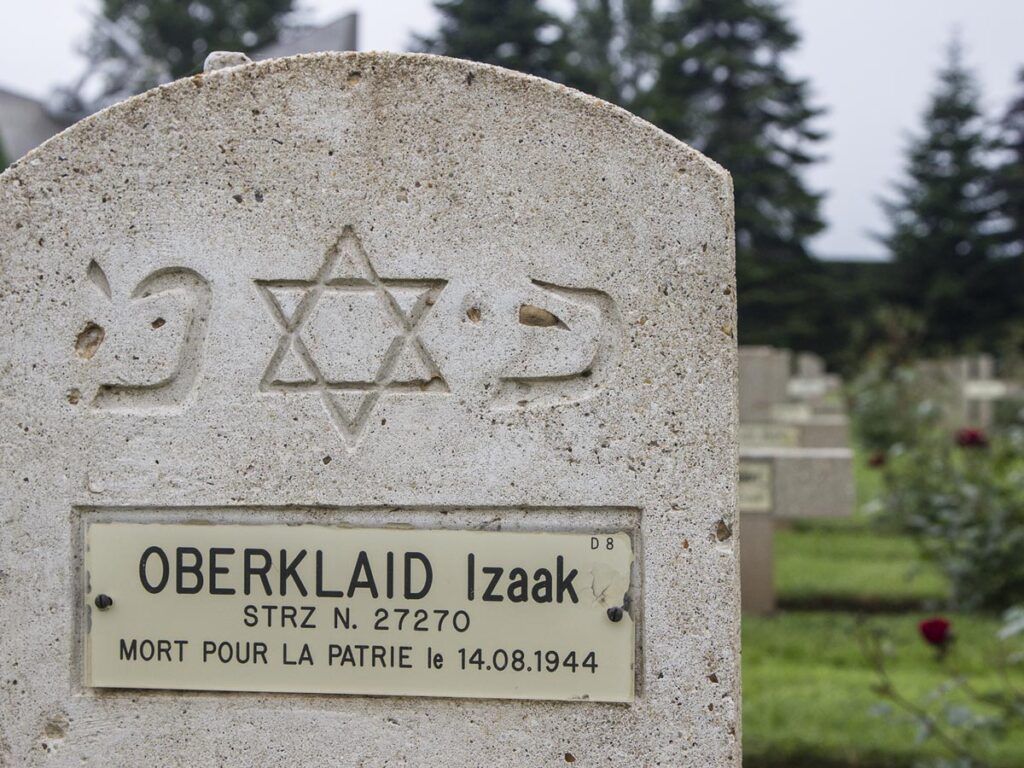
For history enthusiasts, combining this visit with the Mémorial de Caen museum provides excellent background on the Normandy campaign and the diverse Allied forces involved.
Recommended D-Day Tours from Paris:
- From Paris: Normandy D-Day Beaches Day Trip
- From Paris: 2-Day Normandy & Brittany Tour
- Normandy American D-Day Experience (From Bayeux Station)
Recommended D-Day Tours from Bayeux:
- From Bayeux: American D-Day Sites in Normandy Full-Day Tour
- From Bayeux: American D-Day Sites in Normandy Half-Day Tour
- From Bayeux: Half-Day Normandy WWII Sidecar Tour
- Full-Day US Battlefields of Normandy Tour from Bayeux
Recommended Private D-Day Tours:
- From Paris: Normandy D-Day Landing Beaches Full-Day Tour
- From Rouen: Normandy D-Day Beaches Private Full-Day Tour
- Private Tour: Rouen, Bayeux, and Falaise Day Trip from Bayeux
- Normandy WWII Private Half-day Sidecar Tour From Bayeux
Recommended Band of Brothers Tours:
Travel Tips and Accommodation
The small towns surrounding Urville-Langannerie have limited accommodation options, so staying in Caen or Falaise makes more sense for most travelers. Both cities offer a range of hotels, B&Bs, and restaurants for various budgets.
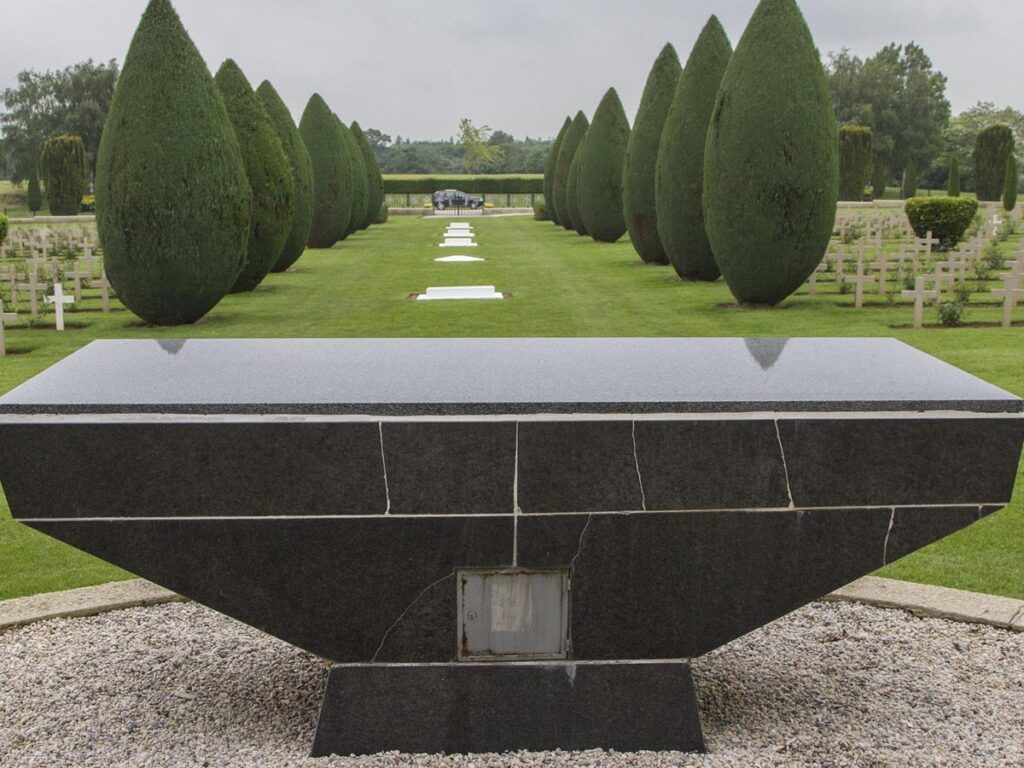
Pack for Normandy’s changeable weather—a light raincoat and comfortable walking shoes are essential even in summer. Bringing a small guidebook or downloading information about the Polish forces beforehand will enrich your visit.
Consider renting a car for maximum flexibility in exploring this and other Normandy sites. The rural location means dining options near the cemetery are scarce, so pack a respectful picnic lunch or plan meals in nearby towns.
Recommended Hotels in Caen:
- Hôtel des Quatrans
- Best Western Plus Le Moderne
- Mercure Caen Centre Port de Plaisance
- Ibis Styles Caen Centre Gare
- Hôtel Restaurant Ivan Vautier
Many visitors find combining this cemetery with other WWII sites creates a meaningful day trip. The American Cemetery at Colleville-sur-Mer is about an hour’s drive north, while the German Cemetery at La Cambe offers an interesting contrast.
Nearby Attractions
The Polish War Cemetery at Urville-Langannerie serves as an ideal starting point to explore the rich historical sites of Normandy. Within driving distance, you’ll find several significant World War II landmarks that tell the story of the Allied liberation of France.
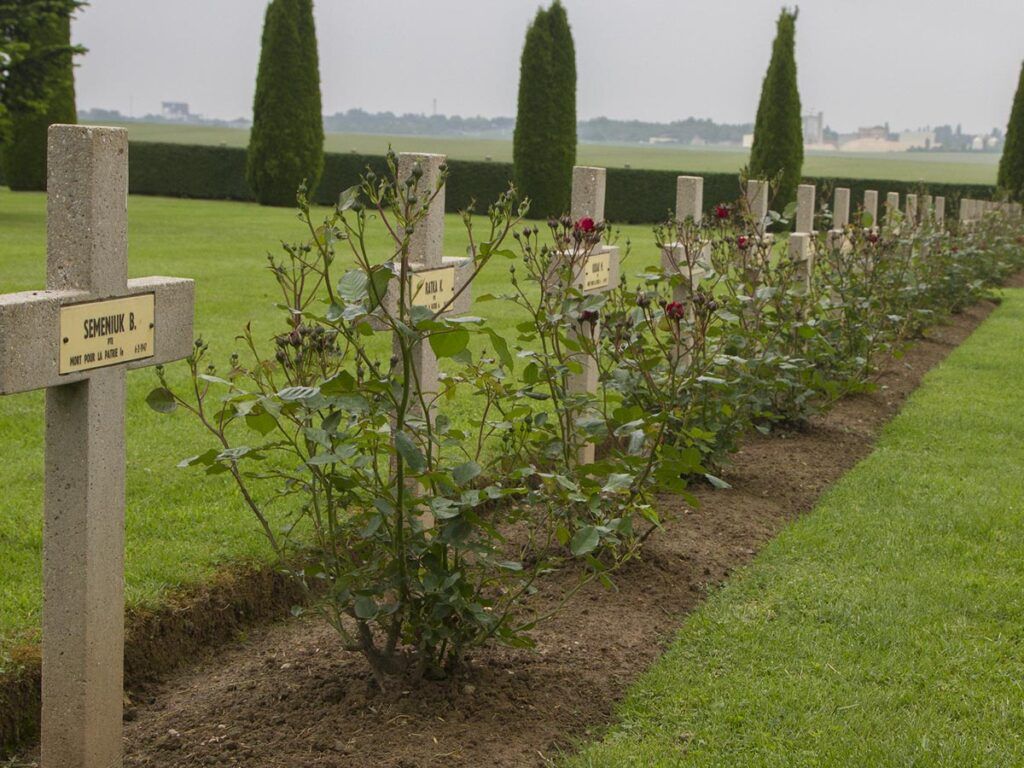
American Cemetery and Omaha Beach
The American Cemetery at Colleville-sur-Mer is about an hour’s drive from Urville-Langannerie. This solemn site contains the graves of nearly 9,400 American soldiers who died during the D-Day landings and subsequent battles.
The cemetery overlooks Omaha Beach, one of the most challenging landing sites during Operation Overlord. You can walk along the beach where American forces faced heavy German resistance on June 6, 1944.
The visitor center offers excellent exhibits that explain the D-Day operations. Plan to spend at least 2 hours here to fully appreciate both the cemetery and beach area.
Pegasus Bridge and Juno Beach
Pegasus Bridge, roughly 30 minutes northeast of the Polish Cemetery, marks the site of a daring British airborne operation. This strategic bridge was captured in the early hours of D-Day, helping secure the eastern flank of the invasion area.
The Pegasus Memorial Museum nearby displays the original bridge and tells the story of the glider troops who seized it.
Just north of Pegasus is Juno Beach, where Canadian forces landed. The Juno Beach Centre in Courseulles-sur-Mer offers interactive exhibits about Canada’s crucial role in the Normandy campaign.
The coastal drive between these sites is beautiful and dotted with small memorials.
Normandy Beaches and Museums
Utah Beach, the westernmost landing site, is about an hour’s drive from Urville-Langannerie. Its excellent museum houses a B-26 bomber and explains the American airborne operations.
Between the major beaches, you’ll find fascinating smaller museums:
- The Battery at Longues-sur-Mer features intact German gun emplacements
- Arromanches shows the remains of the artificial Mulberry Harbor
- The Memorial de Caen provides comprehensive context for the Battle of Normandy
Why It’s Worth Visiting
The Urville-Langannerie Polish War Cemetery offers a unique and moving experience for visitors to Normandy. As the only Polish Second World War cemetery in France, it holds special historical significance.
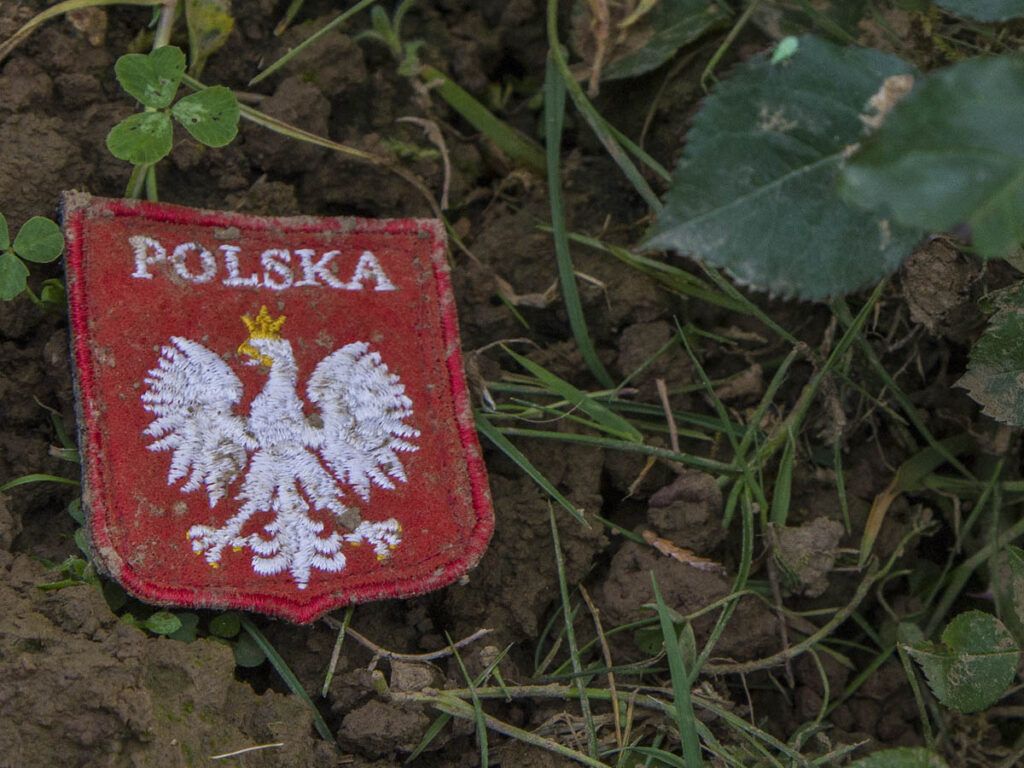
When you visit, you’ll stand among 696 graves of brave Polish soldiers who gave their lives fighting for freedom. Most belonged to the 1st Polish Armoured Division who died during the capture of Caen and the battle to close the Falaise gap.
The cemetery’s peaceful setting creates a powerful atmosphere for reflection. Inaugurated in October 1946, it serves as a solemn reminder of the multinational effort required to liberate France.
You’ll gain a deeper understanding of Poland’s crucial yet often overlooked contribution to the Allied victory in Normandy. These soldiers fought valiantly far from their homeland, which adds another layer of poignancy to their sacrifice.
For history enthusiasts, this site complements the American, British, and Canadian war cemeteries in the region, providing a more complete picture of the Allied forces.
The neatly arranged graves and well-maintained grounds show the respect still paid to these fallen heroes. It’s a place where you can pay your respects while learning about an important chapter of World War II history.
Consider bringing flowers to place at a grave – a small gesture that honors the memory of those who fought for the freedom we enjoy today.

